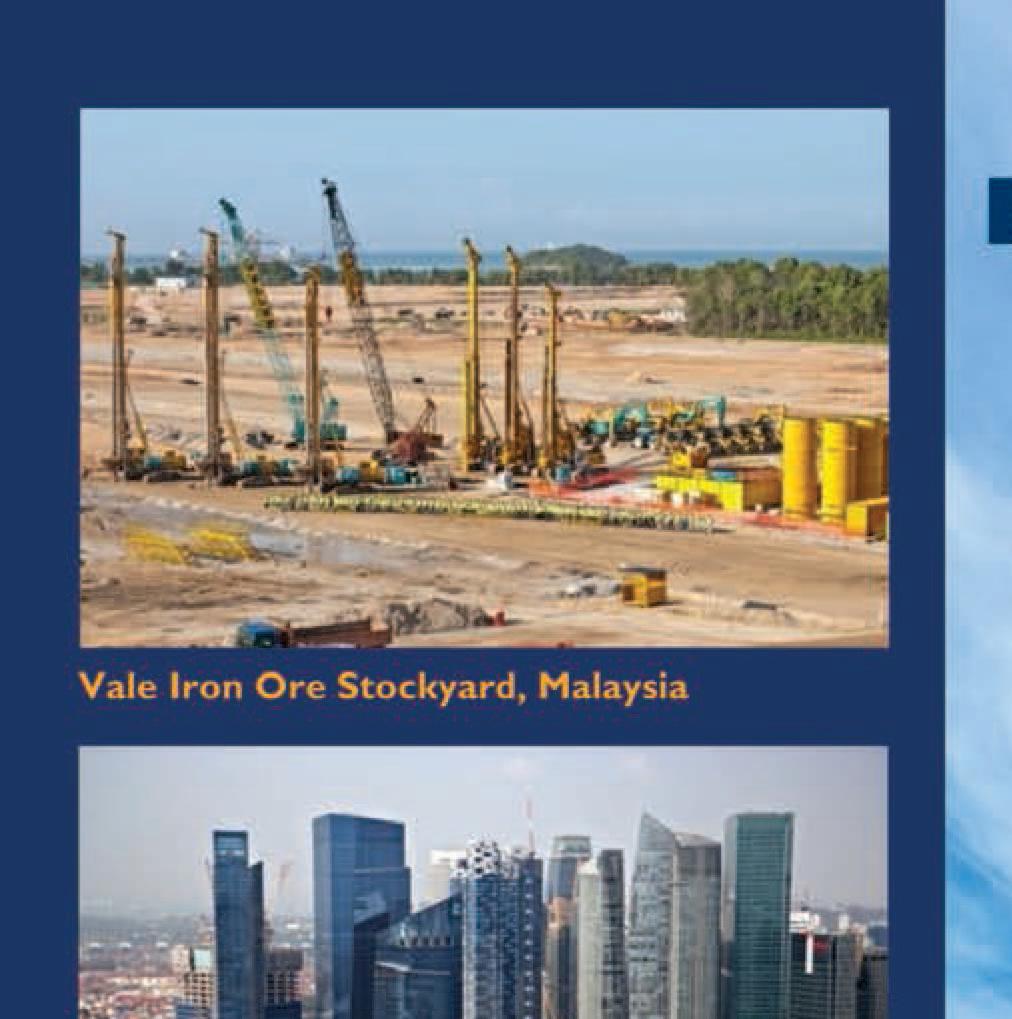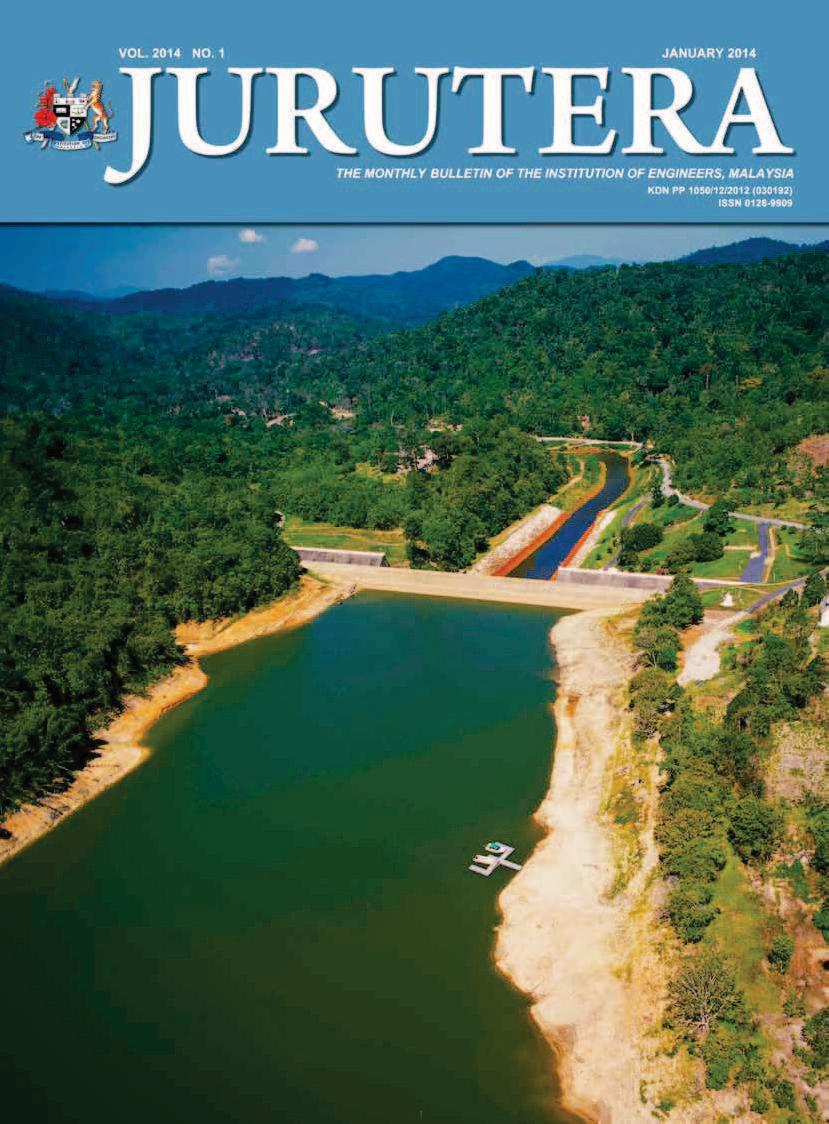
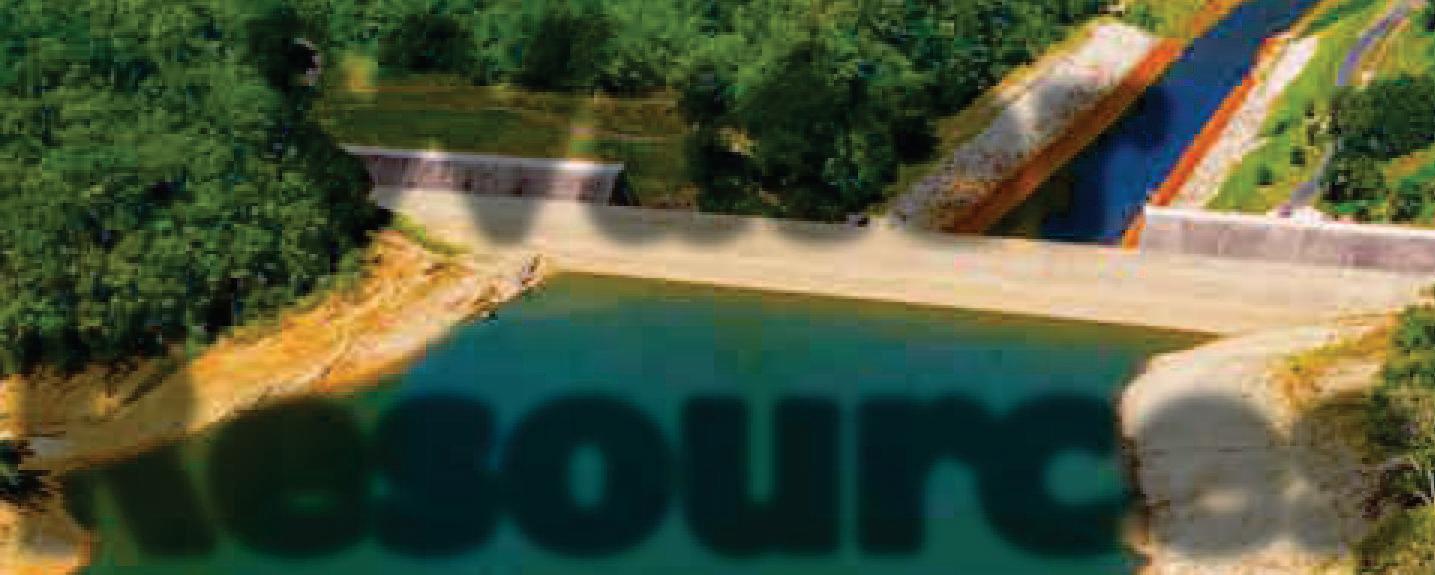


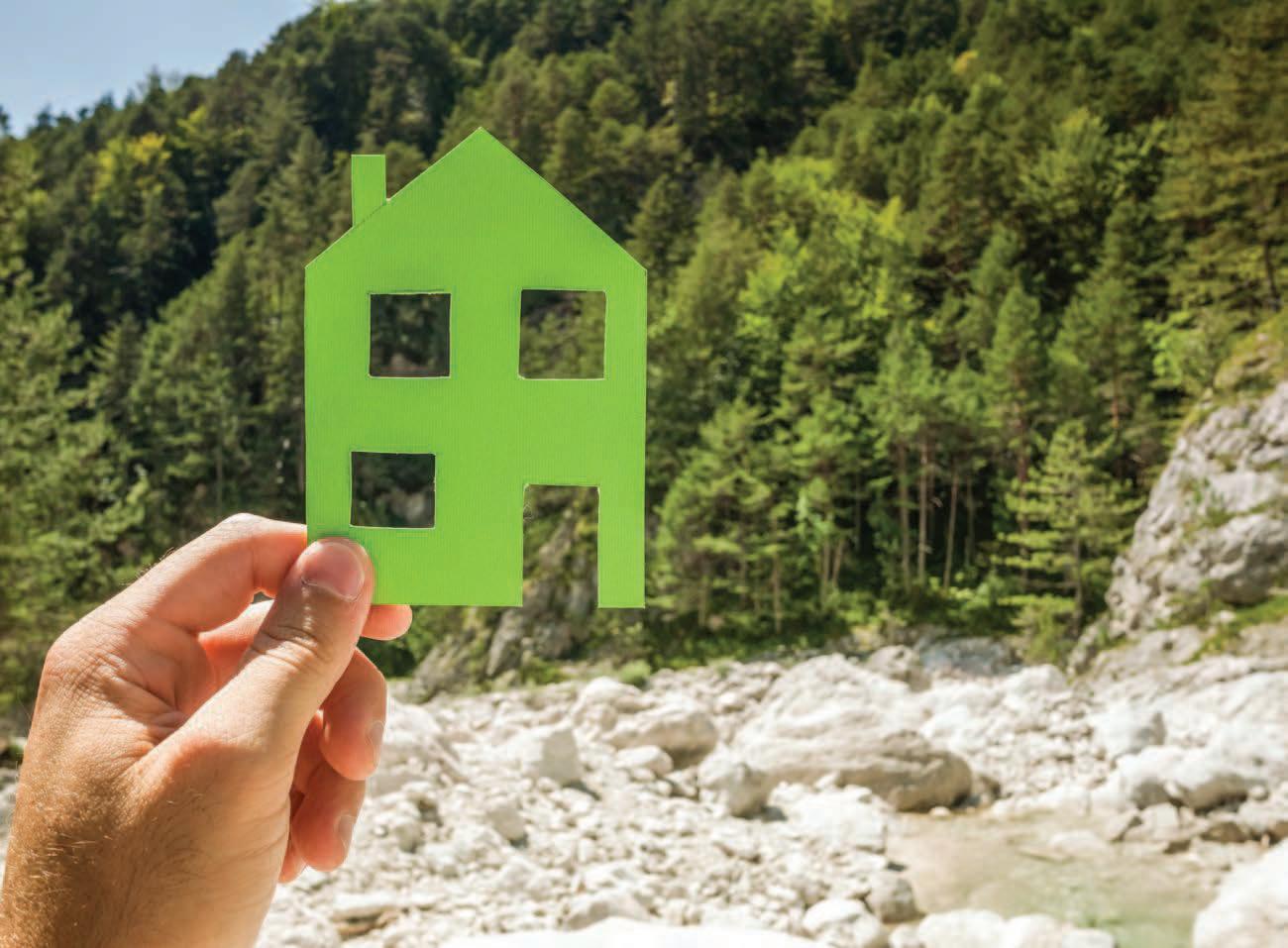
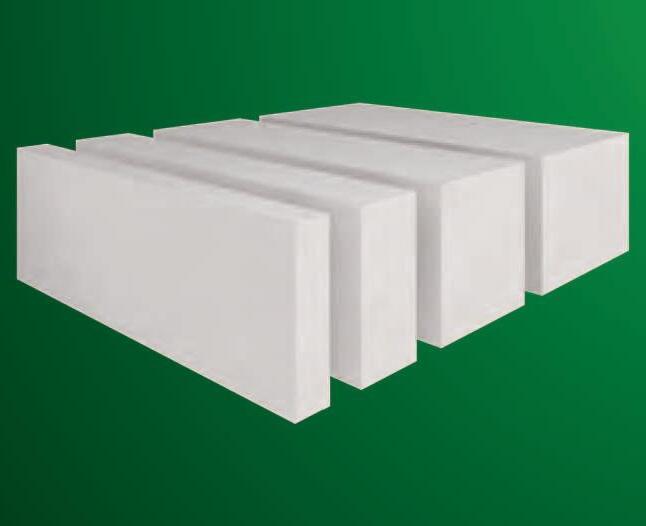
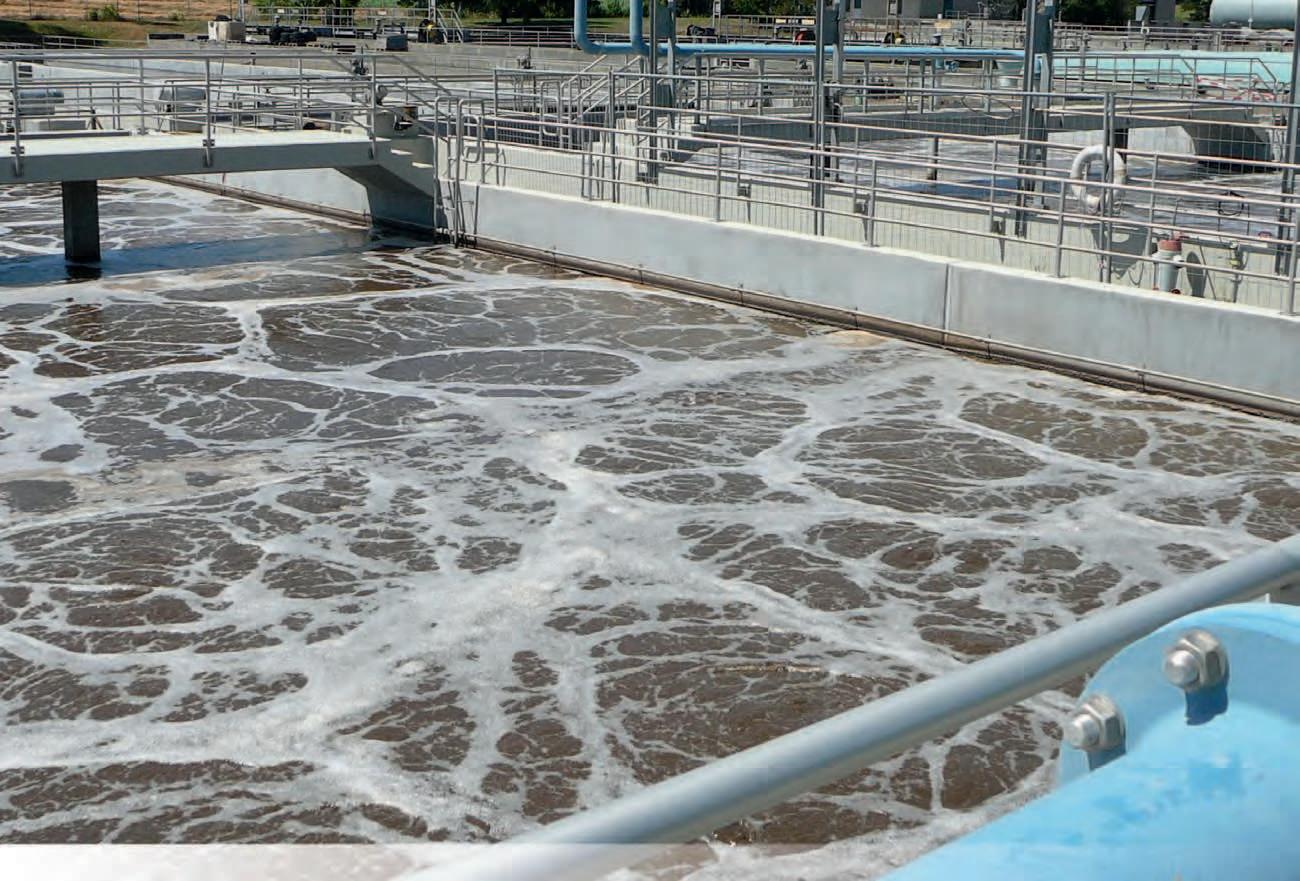
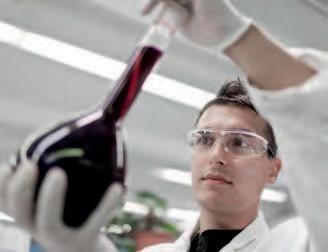

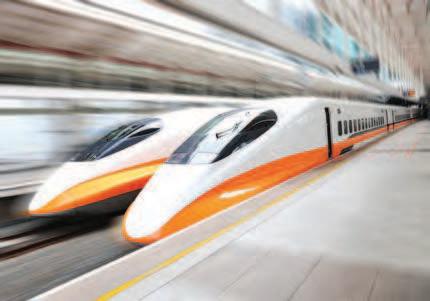

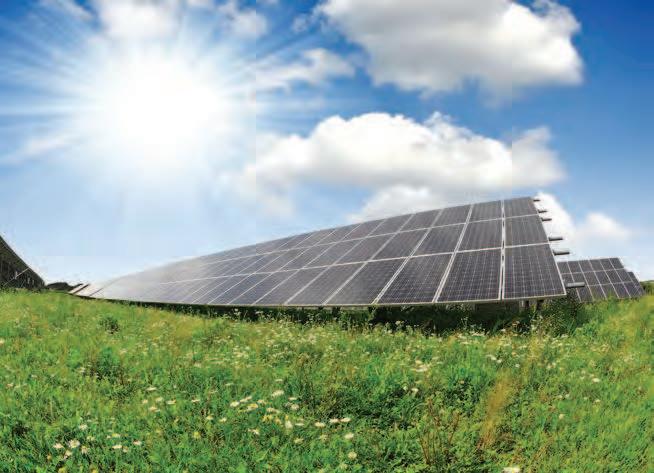

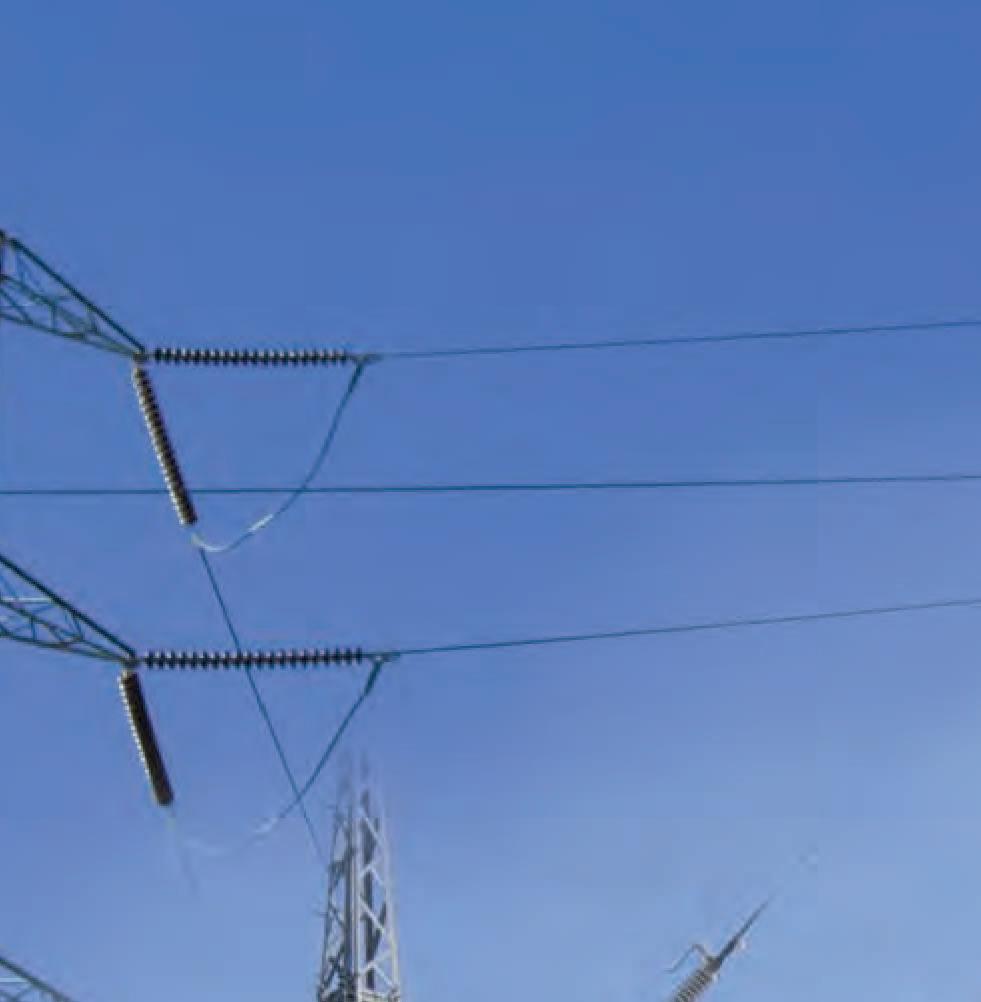

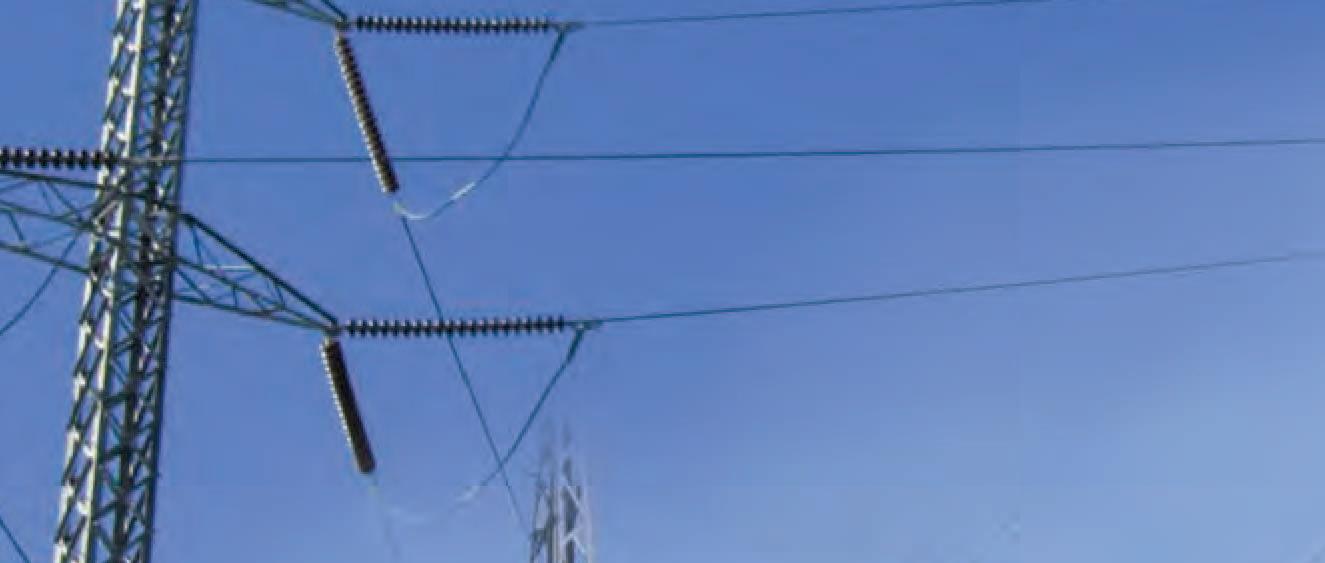
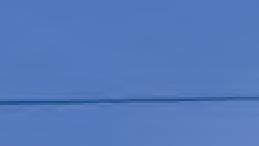
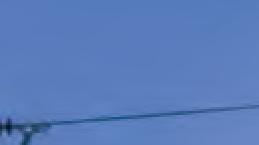
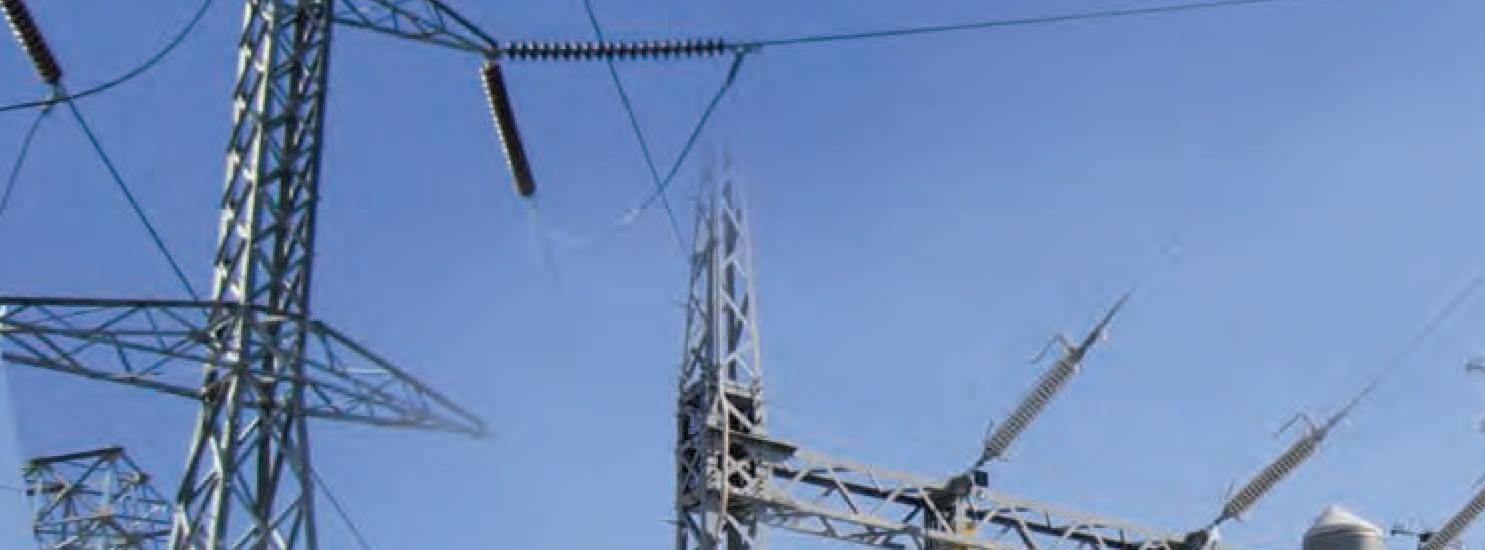

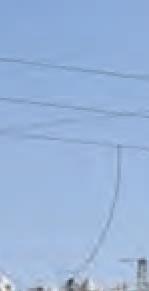
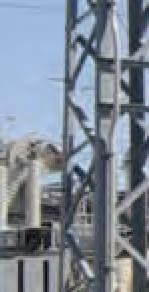


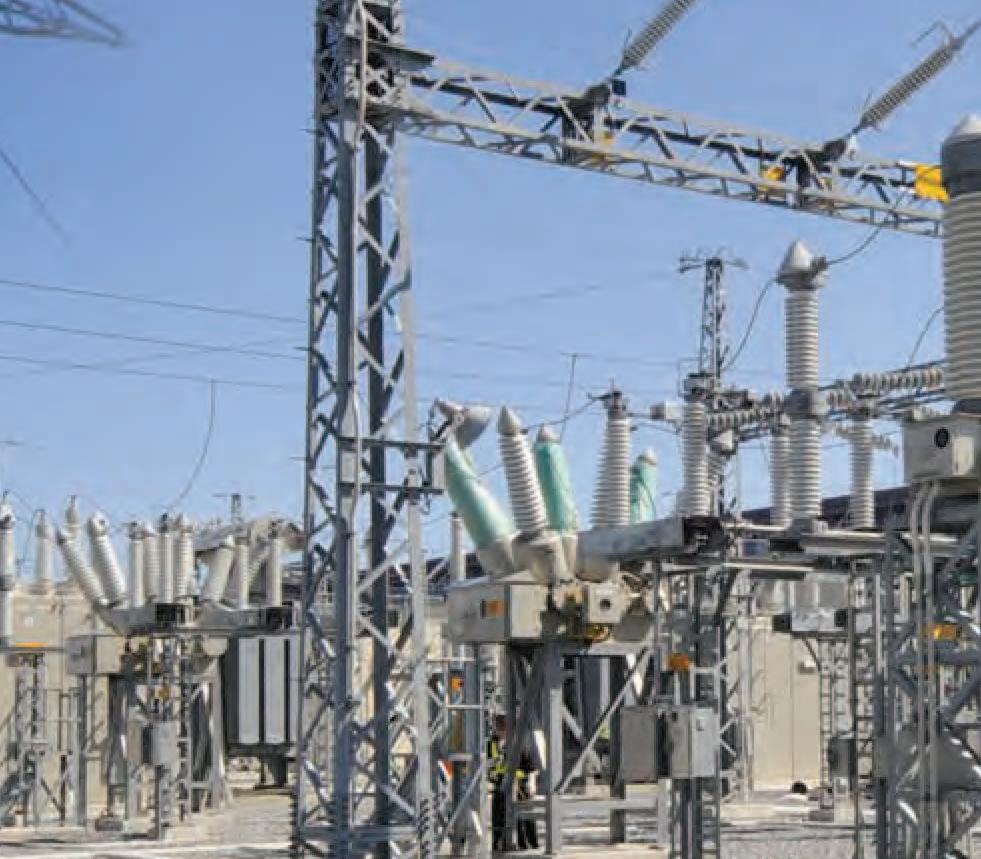
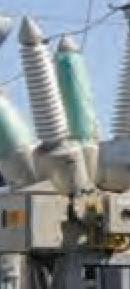
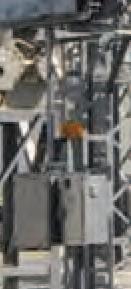

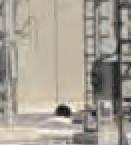
































Number 1, January 2014
YANG DIPERTUA / PRESIDENT:
Ir. Choo Kok Beng, FASc
IEM Registered on 1 May 1959
TIMBALAN YANG DIPERTUA / DEPUTY PRESIDENT:
NAIB YANG DIPERTUA / VICE PRESIDENTS:
Ir. Prof. Dr Ruslan bin Hassan, Ir. P.E. Chong, Ir. Prof. Dr Wan Mahmood bin Wan
Teang Shui, Ir. David Lai Kong Phooi
SETIAUSAHA KEHORMAT / HONORARY SECRETARY:
BENDAHARI KEHORMAT / HONORARY TREASURER: Ir. Hoo Choon Sean
BEKAS YANG DIPERTUA TERAKHIR / IMMEDIATE PAST PRESIDENT: Ir. Vincent Chen Kim Kieong
BEKAS YANG DIPERTUA / PAST PRESIDENTS: Y.Bhg. Dato’ Ir. Pang Leong Hoon, Y.Bhg. Academician Dato’ Ir. (Dr) Hj. Ahmad
Chee Sheng, Y.Bhg. Academician Dato’ Ir. Prof. Dr Chuah Hean Teik
WAKIL AM / CIVIL REPRESENTATIVE:
Ir. Gunasagaran a/l Kristnan
WAKIL MEKANIKAL / MECHANICAL REPRESENTATIVE:
Y.Bhg. Datuk Wira Lt. Gen. Ir. Ismail bin Samion (Rtd)
WAKIL ELEKTIK / ELECTRICAL REPRESENTATIVE:
Ir. Mohd. Aman bin Hj. Idris
WAKIL STRUKTUR / STRUCTURAL REPRESENTATIVE:
Ir. Yam Teong Sian
WAKIL KIMIA / CHEMICAL REPRESENTATIVE:
Ir. Prof. Dr Abdul Aziz bin Abdul Raman
Ir. S. Kumar a/l Subramaniam
WAKIL MULTIMEDIA / MULTIMEDIA REPRESENTATIVE:
Ir. Noor Iziddin Abdullah bin Ghazali
AHLI MAJLIS / COUNCIL MEMBERS:
Ir. Dr Tan Kuang Leong, Ir. June Lau Yuk Ma, Ir. Assoc. Prof. Dr Norlida bt. Buniyamin, Ir. Ishak bin Abdul Rahman, Y.Bhg. Dato’ Ir. Abdul Rashid bin Maidin, Ir. Lee Cheng
Pay, Y.Bhg. Dato. Ir. Samsuddin bin Ismail, Ir. Lee Boon Chong, Ir. Tu Yong Eng, Ir. Lai Sze Ching, Ir. Lee Weng Onn, Ir. Yap Soon Hoe, Ir. Li Thang Fai, Ir. Juares Rizal bin Abd. Hamid, Ir. Norazman bin Mohamad Nor, Ir. Ellias bin Saidin, Ir. Assoc. Prof. Dr Jimmy Mok Vee Hoong, Ir. Dr. Tan Chee Fai, Ir. Kok Hee Poh, Ir. Tiong Ngo Pu, Ir. Yau
Ir. Assoc Prof Dr. Vigna Kumaran Ramachandaramurthy
PENGERUSI CAWANGAN / BRANCH CHAIRMAN:
1. Pulau Pinang – Ir. Paul Phor Chi Wei
2. Selatan – Ir. David Lee Loke Hai
4. Kedah-Perlis – Ir. Chua Teik Seng
5. Negeri Sembilan – Ir. Hj. Baharuddin bin Ahmad Nasir
6. Kelantan – Ir. Hj. Syed Abdul Rahman bin Syed Abdullah
7. Terengganu – Ir. Mohd. Azmi bin Ali
8. Melaka – Ir. Vellan a/l Vengo @ Perumal
10. Sabah – Ir. Tan Koh Yon
11. Miri – Ir. Goh Soon Boon
12. Pahang – Ir. Tuan Haji Ahmad Kamal bin Kunji
AHLI JAWATANKUASA INFORMASI DAN PENERBITAN / STANDING COMMITTEE ON INFORMATION AND PUBLICATIONS
2013/2014:
Pengerusi/Chairman: Ir. David Lai Kong Phooi
Naib Pengerusi/Vice Chairman: Ir. Yam Teong Sian
Ketua Pengarang/Chief Editor: Ir. Prof. Dr Lee Sze Wei
Pengarang Prinsipal Jurnal/Principal Journal Editor: Pengerusi Perpustakaan/Library Chairman: Ir. C.M.M. Aboobucker
LEMBAGA PENGARANG/EDITORIAL BOARD 2013/2014: Ketua Pengarang/Chief Editor: Ir. Prof. Dr Lee Sze Wei
Fai, Ir. Hj. Look Keman Sahari, Ir. Yee Thien Seng, Ir. David Lai Kong Phooi, Y.Bhg.
52/4, P.O. Box 223, (Jalan Sultan), 46720 Petaling Jaya, Selangor Darul Ehsan. Tel: 603-7968 4001/4002 Fax: 603-7957 7678
COVER NOTE
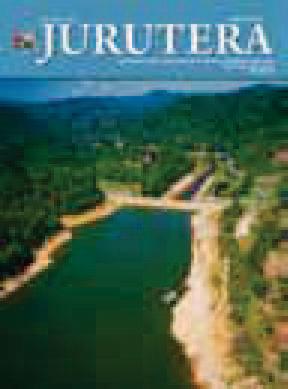



TowardsAWater Secure Malaysia...........................................................................
COVER STORY
Blessed With Water, But Let’s Not Be Complacent..................................................
PRESIDENT’S CORNER
Ladies,You Can Do It!............................................................................................
FEATURE ARTICLES
Greywater Reuse:ASustainableAlternative Water Resource............................... River of Life –AGreen Vision................................................................................. Malaysia’s 1st “Ultra-High Performance Ductile Concrete” Composite Bridge in a Marine Environment.........................................................................
PROFESSIONAL INTERVIEW ESSAY
Nuclear Magnetic Resonance ProbeTuning Mechanism......................................
ENGINEERING DIGEST
SAFE TEA TIME
Hot Planning...........................................................................................................
FORUMS
Technical Visit to theThree Gorges Dam, China................................................... Report onTechnicalTalk on Subsea Processing and Subsea Factory Vision....... Integrating Environmental Information in Decision Making....................................
GLOBE TREKKING
Steeproad toABC...................................................................................................
PINK PAGE
Temuduga Profesional............................................................................................
BLUE PAGE
Keahlian..................................................................................................................




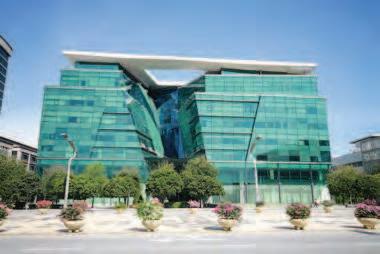
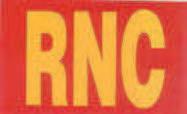


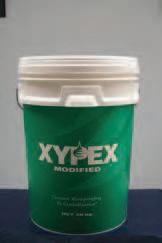




(449732-T)

shirley@dimensionpublishing.com
joseph@dimensionpublishing.com
bee@dimensionpublishing.com
cctan@dimensionpublishing.com
siewli@dimensionpublishing.com
beela@dimensionpublishing.com
masaki@dimensionpublishing.com
yenyin@dimensionpublishing.com
DIMENSION PUBLISHING SDN. BHD. (449732-T)
HOFFSET PRINTING SDN. BHD.
JURUTERA MONTHLY CIRCULATION: 28,000 COPIES
PUBLICATION DISCLAIMER
COPYRIGHT
who is anybody in the water management sector in Malaysia today would have heard of Tan Sri Dato’ Ir. Shahrizaila Abdullah, a Senior Fellow of the Academy of Sciences who initiated and led the Sustainable Water Management Programme at the academy from 2006 until the middle of this year
Prior to that, he had a long career in both the public and private sector, one that mainly concerned water. He served the government for over 30 years, retiring as the DirectorGeneral of the Department of Irrigation and Drainage in 1995.
Duringthistenure,heattendedthelandmarkInternational Conference on Water and the Environment held in early 1992 in Dublin, Ireland which saw the formulation of the momentous Dublin Statement on Water and Sustainable Development, also known as the 1992 ICWE Dublin Principles on Water, subsequently endorsed by the world’s
. This document paved the way for water experts around the world to identify, plan and manage water security issues in their respective countries, and has served as a guide in all global water dialogues since.
Following his retirement, he enjoyed an eight-year stint in the private sector, serving as Chairman and Specialist
Q: What is the current outlook for global water security now, compared to say, 20 years ago?
A:
to safeguard sustainable access to adequate quantities of acceptable quality water for sustaining livelihoods, human well-being, and socio-economic development, for ensuring protection against water-borne pollution and water-related disasters, and for preserving ecosystems in a climate of peace and political stability.
With more than half of humanity currently urbanised, many cities are facing acute scarcity in providing clean, safe water. Urban managers are also increasingly daunted by the complex task of sanitation – i.e. managing wastewater generated by cities so that harmless, clean water is returned to the natural water cycle.


consultant with KTA Tenaga
based in Kuala Lumpur.






Te r. th i al his in water,

In October, with his wealth of experience in water, he was invited to speak at the International Conference on Water and Wastewater Management 2013, where he shared his insights on the topic, “Integrated Water Supply and Wastewater Management Services – a


In this issue of JURUTERA, Ir. Shahrizaila shares more of his thoughts about the realities of water management in
abundance now – to ensure our future needs will always be met.
Globally, and Malaysia is no exception, the fast pace of both the terrestrial and aquatic ecosystems. One needs
extent of pollution originating from unfettered development upstream that have led to severe ecosystem changes.
With continued population growth and the pressure on the environment, the challenge is really how to reverse this process. The logical way forward is to arrest the situation an accompanying roll back plan of rehabilitation.
are in place now – are they good enough or has there been too much talk and not enough action?
A: Global dialogues and forums have been useful in highlighting issues and sharing of experiences and solutions

reaches the grass roots for its adoption and effective implementation leaves much to be desired. There are many good lessons learnt and the onus falls on individual governments to ensure their implementation on the ground. So going by the track records of the last decade or so –while a lot of good things have been done – the actually delivery (of water security goals) is still not up to mark.
Q: Why is that happening?
A:
human capital. There are countries that are economically poor and there are countries that are technologically poor. So this is the dimension in which we’re talking about. You may have the money but if you are technologically lacking, then things still won’t get done. What we’d like to see is governments or individual countries coming up with both capacity building, which means developing the human capital, and incorporating science and technology in is not going to provide the solution.
How many countries, especially developing countries, of a sense of doom and gloom being spread, but I don’t think
we should concern ourselves too much with that. Solutions are there. The last global Earth Summit and World Water
Q: Is there any particular country that has struck by leaps and bounds?
A: Well, I think when they talk about developed countries, they have it. They have the economic capability, the technological know-how and the talents. Even so, amongst the middle-income countries, there have been some very good success stories and I would say that Malaysia does fare well in that context. We have the means, we have the technology and we also have fairly well-trained people. And there has also been good response from our nonexcelled in it.
Ourproblemshavelargelybeenduetothestructureofthe country’s administration – Federal/State dichotomy. There are countries with a similar sort of political environment, for example, the US also has to contend with a system of State governments and a Federal government, and the reason they have overcome it is that the resource is spread across the nation, and every State is individually rich.


are able to look at the greater good?
A: Yes. If every State in Malaysia is rich, I don’t think they need the (assistance) of the Federal government. So we’ll
Q: Is this the main challenge in water security management here – that it is territorial in nature?
A: No. The other reason is that we are blessed with so much water that we tend to be complacent. We have between 2,000 and 3,000mm rainfall per annum – we have
negative attitude for the people to have. Why is Singapore
Q: Because water is scarce in the Republic and
A: Yes, it’s a very simple question of survival. Scarcity forces them to do everything to put it right. I actually never like to compare Malaysia with Singapore because the country is very different from ours. Every time we talk about a (water management) project, we have to talk about the economics of it – we can’t run away from that – and it often ends up that we can’t really justify economically some of the things that we want to do because water is aplenty here.
amount of money and resources for it?
A: Yes, so people here are therefore more prepared to accept a little bit of pollution here and there, when by right, we should not be. That mentality is not right. Unfortunately, the only thing that can change that is how to get economics into the equation. In other words, we have got to get people thinking that waste water has got its economic value. We have to work on that. That’s the only way to get things going. There are good examples of countries which have used waste water successfully and we should do the same, if not for now, then for the future.
Q: Why has Malaysia been resistant to it?
A: It’s economics. There’s an easier solution to get what you want. Take, for example the case of Sg. Perak. It has plenty of potential for tourism such as river cruises. There’s so much to see, so much of history. There are opportunities and economic value. With all this potential, we can invest in proper dredging. The tourism sector will pay for the cleaning up process. At the end of the day, someone has to pay for that.
It’s got to be value-added. In trying to clean up, you must also bring in something so that the cost of cleaning up is recovered in the form of new wealth creation. This is what Singapore has been doing, though it’s incidental. In trying to get clean water, they have invested in and developed
in the process, this technology has become a money earner. Countries around the world which want the same technology, will have to pay if Singapore patented it.
water doesn’t change, can this happen?
A: IthinkMalaysiashouldreachapointwherethecommunity takes care of its own water. If we can reach that stage, then we are there. That is the ultimate. In other words, you care for your own water and if somebody pollutes it, you go after the guy.
didn’t do anything), or that the DID (Department of cleanliness
A: That’s the point. It’ll have to come at some point in time we need to look at is our local authorities. They have to be strong to enforce rules and regulations. Kuala Lumpur City Hall is strong, but not all the local authorities are like it. Pollution is human created – and the power to curb it is with the local authorities. If they allow rubbish to get into that at the end of the day, the best solution to pollution is to campaigning, not only by the DID but also by
A: Awareness has been created but to say that people are now willing to do something about it – that still remains to be seen. It’s the complacency that we have, which is the bad effect to having plenty of water.
Q: Talking about plenty, in Malaysia, there has been much talk about water crises and water for all our sectors?
A: Malaysia has enough but it’s more a management issue. So water security is achievable for us, but it’s still a management issue. At the end of the day, when we talk about participatory management, if all these things fall in place, we will be there. The people need to drive this.
Q: What are your thoughts on Supply Management
A: In the past few decades, we have always been employing the supply management technique in addressing our water needs. When there is a new housing village, we look for new sources of water to accommodate the growing needs.
without the other. If we build more dams, we will destroy the environment.
“ With more than half of humanity currently urbanised, many cities are facing acute scarcity in providing clean, safe water. ”
When there is a crisis, when you’re short of water, look at the demand side as well – are there ways and means we
Malaysia’s current per capita water usage is 240 litres per person, per day, compared to 140 litres per person, per day, for Singapore. So if we can bring down the demand, we don’t have to keep looking for new sources of water.
The amount of non-revenue water also need to be brought down – that requires investment. Some of this is due to old-pipe leakage. There is also corruption – the bigger users who steal. They’ve been doing this too, though the water supply people have been slowly plugging that. One of the good things about privatisation is that you have water, they can also sell more.
The other aspect of demand management (human system integration) that we should look at is that water policy sits among a larger system of nested policies comprising of economic policy, food policy, health policy, and environmental policy. All these policies should take into account water usage and management. For example in health, clean water and good sanitation contributes to good health.
Q: So all these policies should integrate good water management practices into them?
A: Yes, they should.
Crisis’ in Selangor?
A: I believe it’s always good to invest in the future when it comes to water. One of the good things that we inherited
the amount of water released from the dams were quite low because dams were planned to accommodate the rise in demand for the next 50 years. Any investment for longer later as land prices will continue to escalate, so Selangor has got to look forward. We should not be talking about the people, two to three generations from now









“I do not wish women to have power over men but over themselves.”
THE contributions of women in IEM have been remarkable to say the least. Strangely, it was not until the last two years that IEM set up the IEM Women Engineers Malaysia (IEM WE) section. However, my heart beats for something more.
On a larger scale, female participation in national development has been taken for granted. At the recent 2013 UMNO General Assembly, the Prime Minister pledged that Wanita UMNO was the backbone of the party. He also sent a clear message that women in the country should no longer be ridiculed and marginalised, but must be appreciated and respected.
I think we should do the same in IEM, if not more. Take, for instance, the presidency of IEM. We have never had a woman as President of IEM – yet there is no rule that prevents a woman from assuming the role.
Personally, I believe that if someone is capable of being the President, then that person should be the President –regardless of whether that person is a man or woman!
What I’m trying to say is that I believe women in IEM can do so much more if they set their hearts and minds to it. Take the lead where you can and speak out more. Participate in all IEM activities and demonstrate your capabilities.
As President of IEM, I want to honour and celebrate the female power and talent in IEM. I know there is much unharnessed talent in our women engineers.
Put your heart to it: The possibilities are endless!
You only need to look around you to see how other women have proven public perception wrong.
Look, for instance, at the Director-General of UNESCO,
is the motivation for all women to aim for the skies.
Closer home, we have AirAsia Berhad CEO Aireen Omar who was passed the torch by Tan Sri Tony Fernandes. She may only be 39 years old but she’s a strong, iron lady who helms Asia’s leading budget airline against many other players in the region. Had she thought that she was incapable, had she hesitated in her dreams, she would not have been where she is today.
So ladies, I urge you to go forward. You are doing an amazing job in IEM but you can do so much more.
As I have always said, I’m always open to discussion and brainstorming. Talk to me anytime if you want to. But don’t doubt yourself. You can do it!


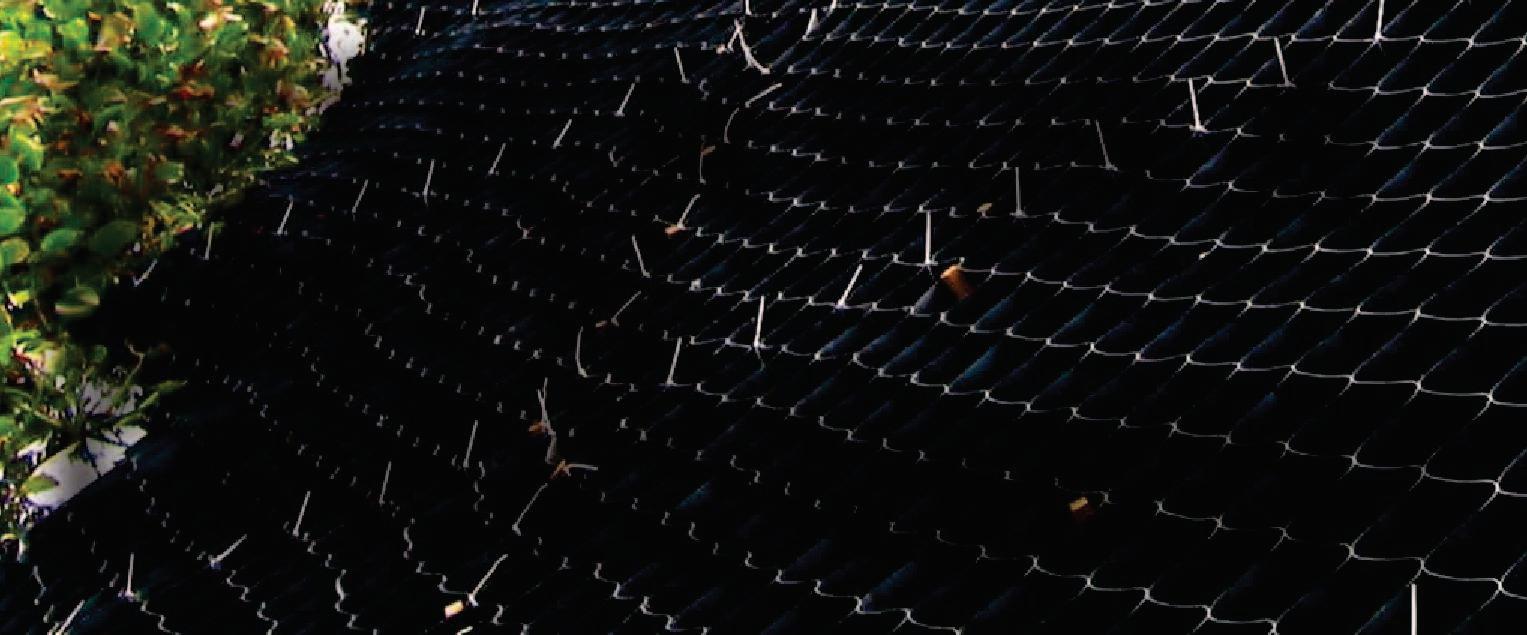


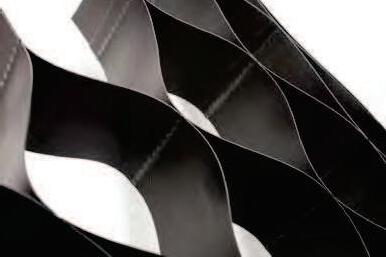

Sewage generated in a household may be separated into greywater and blackwater discharges. Greywater is
The term greywater is used as the wastewater generated is cloudy and the colour compared to white
States in Australia regularly update their guidelines on homes in Australia installed with greywater systems. The or with potential /
systems can be installed in homes by complying with guidelines and regulations issued by the authorities.
minimal as pathogens are usually killed are not spread to others as atmospheric generate droplets in the air which can be Family members are not at high risk

inhibit seed germination and break down the clay molecules in soil.
streams – bathroom greywater and laundry greywater.
growth.
Parameter
Suspended Solids Turbidity
Ammonia
Total Phosphorous Sulphate
reduce water demand in the home.
with no treatment or basic physical and chemical treatment to more complex biological and bio-mechanical treatment
chlorine treatment may be necessary.

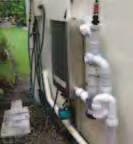
or other user demand. The surge tank should not store microbial problems unless chemical and/or microbial
The water shall not be sprayed or otherwise applied so the municipal wastewater system when there is excess or
It is better to install the greywater system during landscaping.
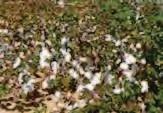

carried out a study which concluded that there was no household greywater and that the soil microbes seemed to was recommended to reduce pathogenically contamination below.


source generated.
Noor Hisham Yahaya Organising Chairman IEM Annual Dinner Organising Committee




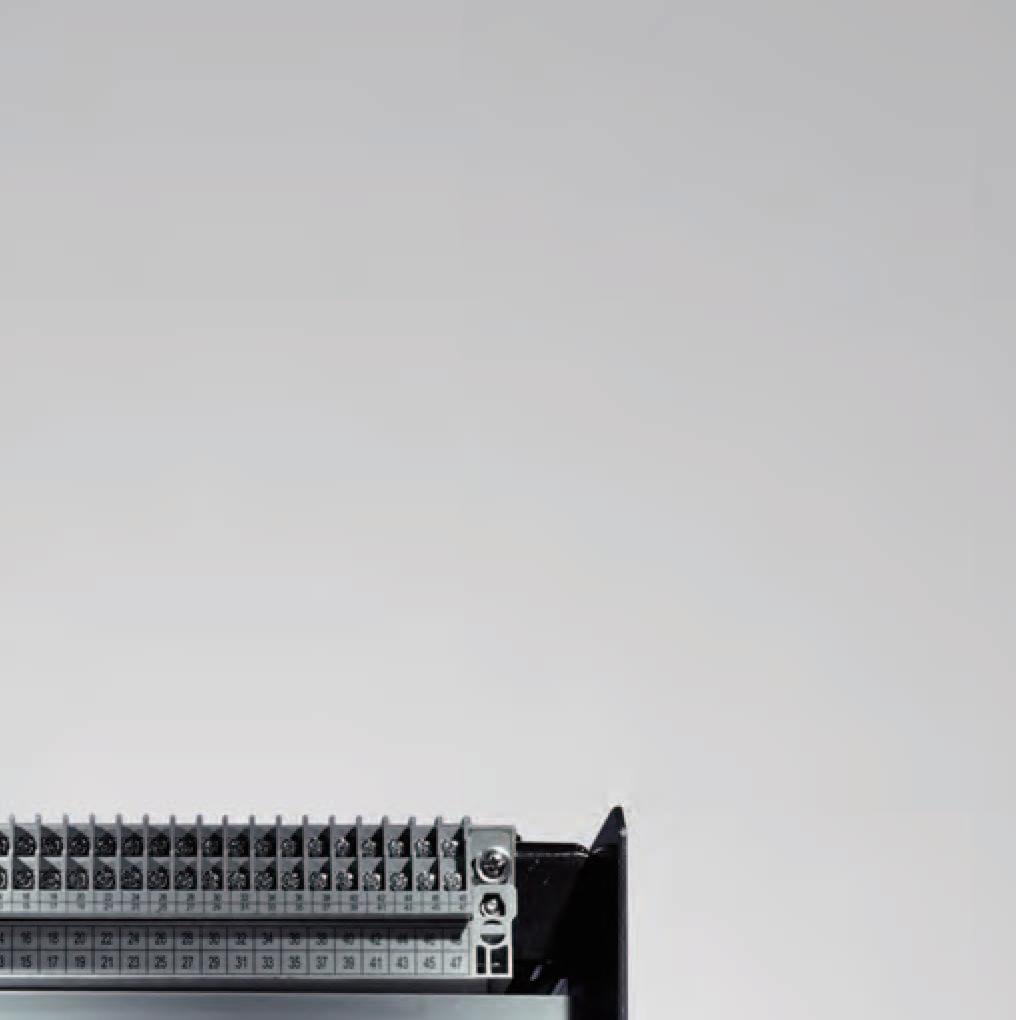
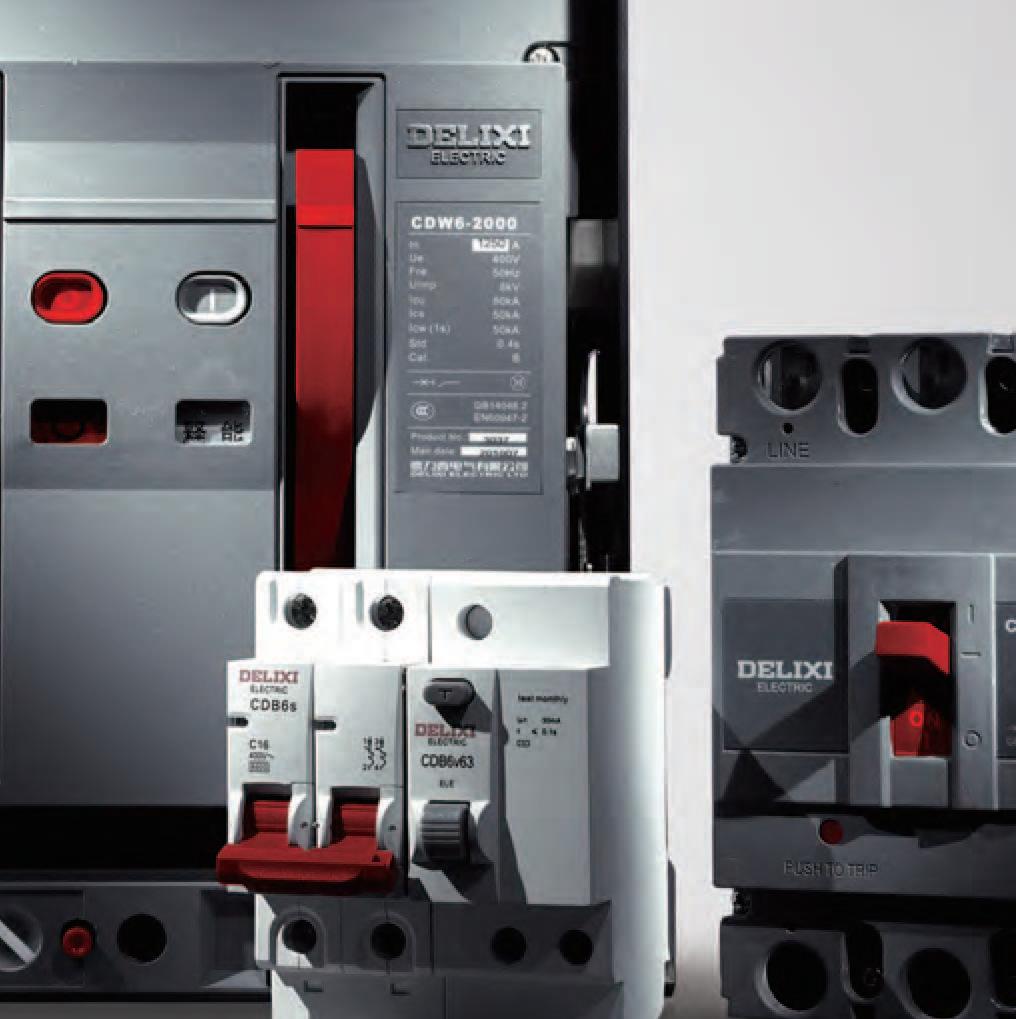




in the Greater Kuala Lumpur/KlangValley National Key Economic Area (NKEA) under the Economic Transformation Program (ETP). RoL aims to transform the Klang River into a vibrant and livable waterfront with high economic value. This transformation is divided River Development.
The overall aspiration of Greater Kuala Lumpur is “to be the metropolis in Asia that simultaneously achieves top-20 economic growth and to be among the global top-20 most livable cities by 2020”, under part of the EPP (Entry Point Project), the River of Life. The main objectives are:
Enhancing, rehabilitating and preserving the river and its environment, compatible with the envisaged Greater Kuala Lumpur City status for the project area, including improving and sustaining the Klang River and its tributaries within the study area Water Quality to Class IIB (suitable for body-contact recreational usage) by year 2020.
project area, in support of achieving the Greater Kuala Lumpur City status.
Cleaning
River cleaning will be conducted along a 110km stretch of the main river and tributaries within the Klang River basin, covering the municipal areas of Majlis Perbandaran Selayang (MPS), Majlis Perbandaran Ampang Jaya (MPAJ) and Dewan Bandaraya Kuala Lumpur (DBKL).
To increase economic viability of the area, master planning and along the Klang and Gombak river corridor, starting from Puah include Dataran Merdeka, Bangunan Sultan Abdul Samad and Masjid Jamek.
investments into the areas immediately surrounding the river corridor. To catalyse development along the corridor, potential developers through competitive bidding.




Chaired by Minister of FederalTerritories
Members include the Mayor of Kuala Lumpur, the Chief Minister of Selangor, Ministry of Finance, Economic Planning Unit, heads of ministries, as well as industry and developer associations
Sits every month, reporting progress and resolving issues for all EPPs and Business Opportunities (BOs) under GKL/KV
Headed by the Mayor of Kuala Lumpur JDC sits every month where progress for all three components of River of Life are monitored
River Cleaning
Head by the Director General of the Department of Irrigation and Drainage (Jabatan Pengairan dan Saliran, JPS) River Cleaning Taskforce comprises 26 government agencies across 4 ministries Meets every four weeks, where River Cleaning are resolved and the progress of the 13 Key Initiatives are tracked
River
Head by the Director of the PhysicalPlanning Department (Jabatan Perancangan Fizikal, JPF) of Kuala Lumpur City Hall (Dewan Bandaraya Kuala Lumpur, DBKL) Meets every month, or whenever necessary, to managetheRiver
Master Plan and works of all 11 River Precincts
Head by the Director of the Economic Planning and Development Coordination Department (Jabatan Perancangan Ekonomi dan Penyelarasan Pembangunan, JPEPP) of DBKL Came into force in 2012, to look into the generation of economic value of developments as proposed in the River Master Plan
The Klang River Basin is the most densely populated region in the country. To accommodate the rapid increase in population, the Klang River Basin has experienced rapid development and land use change over the years. As a result, the water quality of the river has declined due to point and non-point source pollution.
Point sources include sewage treatment plants, manufacturing, agro-based industries, food premises, wet markets, abandoned diffused sources such as agricultural activities and surface run
Sediment, especially from construction sites
Solid waste, especially from squatter settlements and markets
Table 1 shows the inventory of pollution sources.
3Slaughter
4Hotel
Towards achieving the River Cleaning objectives, Jabatan Pengairan dan Saliran Malaysia leads 26 government agencies and departments across 4 ministries, 2 States (Selangor and Federal Territory) and 3 municipals (Dewan Bandaraya Kuala Lumpur (DBKL), Majlis Perbandaran Selayang (MPS) and MajlIs Perbandaran Ampang Jaya (MPAJ)) to execute the following 13 Key Initiatives. Figure 1 denotes the project area.
Agencies involved in River Cleaning taskforce:
1. Kementerian Sumber Asli dan Alam Sekitar (KSAAS)
2. Kementerian Tenaga, Teknologi Hijau & Air (KeTTHA)
3. Kementerian Perumahan dan Kerajaan Tempatan (KPKT)
4. Kementerian Wilayah Persekutuan dan Kesejahteraan Bandar (KWPKB)
5. Jabatan Pengairan dan Saliran Malaysia (JPS Malaysia)
6. Jabatan Pengairan dan Saliran Wilayah Persekutuan (JPS WPKL)
Jabatan Pengairan dan Saliran Selangor (JPS Selangor)
8. Jabatan Kerja Awam dan Saliran, Dewan Bandaraya Kuala Lumpur (JKAWS DBKL)
9. Jabatan Alam Sekitar Ibu Pejabat (JAS PERSEKUTUAN)
10. Jabatan Alam Sekitar Wilayah Persekutuan Kuala Lumpur (JAS WPKL)
11. Jabatan Alam Sekitar Selangor (JAS SELANGOR)
12. Jabatan Kesihatan danAlam Sekitar, Dewan Bandaraya Kuala Lumpur (JKAS DBKL)
13. Jabatan Pemudahcara Perniagaan dan Pengurusan Penjaja, Dewan Bandaraya Kuala Lumpur
14. Lembaga Urus Air Selangor (LUAS)
15. Jabatan Perkhidmatan Pembetungan (JPP)

16. Jabatan Pengurusan Sisa Pepejal Negara (JPSPN)
Suruhanjaya Perkhidmatan Air Negara (SPAN)
18. Jabatan Kerajaan Tempatan (JKT)
19. Pejabat Menteri Besar Negeri Selangor
20. Unit Perancang Ekonomi Selangor (UPEN Selangor)
21. Jabatan Perancang Bandar dan Desa (JPBD)
22. Pejabat Tanah dan Galian Selangor (PTG Selangor)
23. Pejabat Daerah/Tanah Gombak (PTD Gombak)
24. Pejabat Daerah/Tanah Hulu Langat (PTD Hulu Langat)
25. Majlis Perbandaran Ampang Jaya (MPAJ)
26. Majlis Perbandaran Selayang (MPS)
13 Key Initiatives have been formulated with the respective programmes to clean the river and to achieve Class IIB by year 2020. Currently, these initiatives are in various stages of implementation.

design signature, a brand for the city riverfront, in planning, architectural, functional and economic terms.The area concerned is demonstrated below.
the Klang and Gombak Rivers into a vibrant and livable waterfront with high economic value through revitalisation of public realm along the rivers. This will be done by providing a consistent
works, the residents of Greater Kuala Lumpur / Klang Valley will area. To further drive development along the corridor, potential
developers through competitive bidding. While the RoL project is funded solely by the Government, the government land along
in value is expected to partially fund the RoL project. The exact amount depends on the transaction value of the government land sold through competitive bidding.
This vision cannot be turned into reality without introducing new technologies. These are the challenges that fellow engineers at DID, DBKL, MPAJ and MPS as well as consultants are facing. Sound engineering design with good quality control during the construction stage is compulsory to achieve the overall objectives.




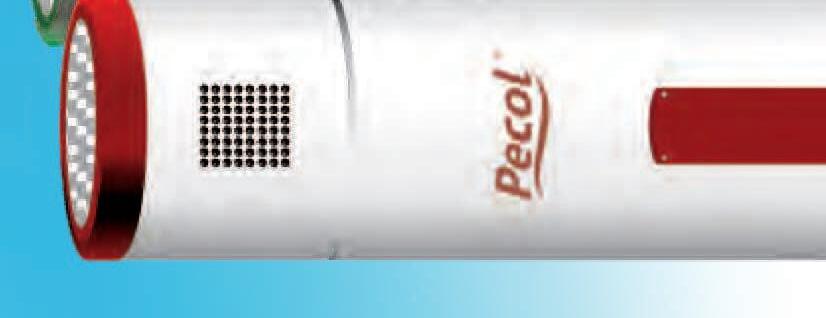






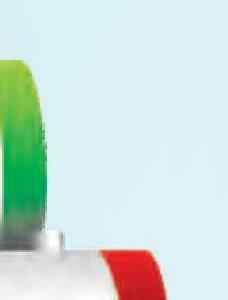


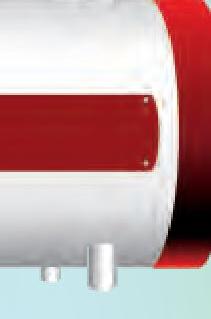





























All RoL initiatives are allocated Key Performance Indicators (KPIs) attached to respective Ministers.Among the technologies used are:
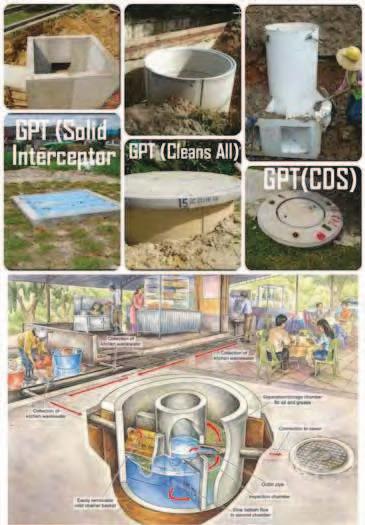
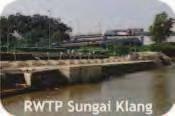


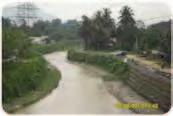




TheRiverCleaningcomponentsinvolvealargenumberoftechnical employees – mainly engineers from agencies, consultants and contractors. The team consists of various engineering disciplines to manage and construct various projects for each Key Initiative. A total of more than 200 engineers and 2,000 supporting staff members make up the teamwork for river cleaning projects.
River of Life Public Outreach Program known as RoL POP is introduced in the area of RoL Basin which is the sub-basin of the Klang River. The current programmes which focus in Upper Klang and Sungai Bunus areas are people-centric towards non-structural
The programmes address river water pollution prevention exercise through educating the public on the need to care for the river and the water quality, such as dos and don’ts as well as other skills to preserve the river. It also promotes public participation and a sense of ownership towards the river system as well as initiates a long-term and sustainable paradigm shift towards river conservation.




THE BIGGEST LV COMPONENTS MANUFACTURER IN CHINA AND REGISTERED UNDER SHANGHAI STOCK EXCHANGE (REG: 601877)


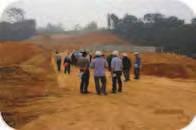












ALPHA AUTOMATION (SEL) SDN BHD (Reg. : 372711-D )
ALPHA CHINT SWITCHES SDN BHD (Reg. : 952175-T )
5, Jalan Pemberita U1/49, Temasya Industrial Park, Glenmarie, 40150 Shah Alam, Selangor, Malaysia. Tel: +603-5569 3698 Fax: +603-5569 4099
Email: alphamail@alphasel.com Website: www.alphasel.com
In conclusion, with the commitment from all stakeholders, together with the implementation of the structural and non-structural measures, the objective to improve water quality to Class IIB can be achieved by the year 2020.
The project also aims for a sustainable change in behaviour towards an environment-cultured society, thus escalating the overall Greater Kuala Lumpur’s aspiration “to be the metropolis in Asia that simultaneously achieves top-20 economic growth and be among the global top-20 most livable cities by 2020”. Nature is what wins in the end
Treat the earth well.
It was not given to you by your parents, It was loaned to you by your children. We do not inherit the Earth from our Ancestors, We borrow it from our Children.
ContributorsfromDivisionofRiverBasinandCoastalManagement,JPSMalaysia:




Maccaferri has more than 130 years experience in soil stabilization. Our expertise includes solutions in retaining wall systems, reinforcement of steep slopes, embankments, soil erosion control and coastal protection system. Traditionally known for Double Twist Gabions and Reno Mattresses, Maccaferri has extended its product range significantly over the last decade, enabling us to offer an unrivalled range of solutions to the construction industry.


Tel : + (60-3) 79557800
Fax: + (60-3) 79557801
E-mail: mm@maccaferri-asia.com
Website:www.maccaferri.com.my


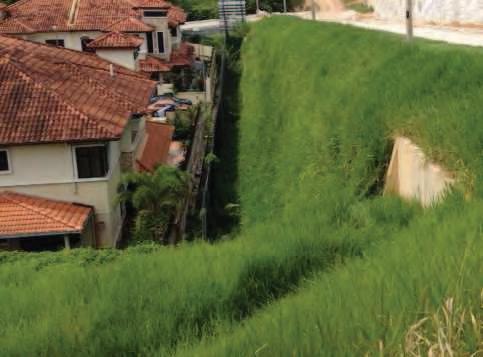



Recently Westports Malaysia Sdn. Bhd. called for tenders to expand its container cargo terminal at Pulau Indah, Port Klang. The project included the construction of four new access bridges (namely Bridge24, Bridge25, Bridge26 and Bridge27) connecting the new wharf to the container stacking yard. Of the four bridges, Bridge25 was to be designed as a special access bridge for overweight and oversized cargo with trailer payloads of up to 3,072 metric tonnes.
Project owner Westports Malaysia Sdn. Bhd. had appointed HSS Integrated Sdn. Bhd. (HSSI) as the Engineer for the project and Putra Perdana Construction Sdn. Bhd. as the Contractor.
Bridge25 in order to carry the exceptionally heavy live loads while
The material has also been reported to be highly durable and (JSCE, 2006). Being located in a marine environment, Bridge25 attack, which would be a major advantage.
concrete composite bridge decks as they were designed for normal highway bridge loadings.
The substructure of the bridge was founded on 800mm diameter of approximately 36m. The piles were framed into Reinforced
same high load carrying capacity required with a shallower beam





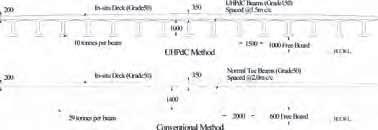
water level could be achieved.
weight saving of approximately 66% per beam compared to the
The composite bridge deck would be completed with a was presented to the Client and subsequently approved.
In Malaysia, most bridges are designed to the highway bridge
These trailers have a total of 96 axles, arranged with 24 axle
side by side at 3.0m centre to centre transversely.
Figure 3 shows an example of the type of overweight and oversized live load that will be using Bridge25.
trailers are able to transport cargo payloads up to a maximum of 3,072 metric tonnes at a time.
composite bridge.

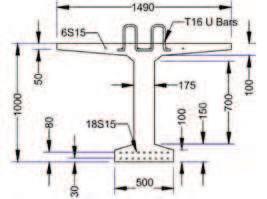
steel reinforcement or stirrups in its section other than the starter
bridge with rigid joints at the supports.
Prior to construction of Bridge25 and to verify the strength of
pretensioned beams include Type I Ordinary Portland Cement,
µ µ of 23,700m2
µ µm. A polycarboxylic ether (PCE) based super plasticiser was used to ensure good
were required to have an ultimate tensile strength of 2,500MPa. The formulation of the mix however has been patented under the ®
For this project, a benchmark value for performance was set
®
beam used on Bridge25. The total length of the beam was
strands. The web was designed as a thin membrane element of reinforcement or stirrups are used as primary resistance against
beams (i.e. without the RC deck) were tested. First principles of solid mechanics were used to calculate the design load actions on the beams in the absence of the deck. The calculations show that
of the design bending moment effect and 79% of the design shear force effect of the composite section. These values are tabulated
resist a minimum design moment of MRd,beam = 3,750kNm and a minimum design shear force of VRd,beam
of the beam was supported on a pinned support, while the other end was sitting on a pin and roller support. The pins and rollers were greased to minimise friction in order to give the required freedom of rotation and horizontal translation.
used to capture the vertical displacements of the beam during testing.

The beam was simply supported over a span of 5.67m between centre lines of the supports. The applied concentrated load was similarly placed of shear span to effective depth used in the shear test was 2.
Figure 5b and Figure 5d respectively, where Pcr,exp denotes the applied cracks on the specimens or as detected on the load versus displacement curves (whichever is lower), and the symbol Pu,exp denotes the maximum applied load recorded at the end of each test.
naked eye, water was sprayed onto the surface of the beam at each load step, to help obtain a clearer trace of the cracks. the applied load of Pcr,exp
The cracking moment capacity (Mcr) of the beam can therefore be calculated as follows: M cr 2
The resulting Mcr
As the applied load increased further, more cracks appeared but these Rd,beam).As a result, the positive moment resistance over the design positive moments shown in curve of the test beam in Figure 5b also showed that the test beam applied load of Pu P cr cr Rd,beam).



Assuming that the shear force was taken by only the rectangular section of the web, the cracking shear strength of the beam can be approximated as follows:
cr
Figure 5d shows the plot of the applied load versus displacement linear elastic behaviour before cracking. The monolithic section
V cr hardening behaviour until the maximum applied load of Pu u
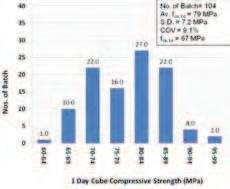
Very strict quality control and inspection procedures were at the end of July the same year.
Each single piece of precast beam was produced from a new batch of one prism). Figure 6 presents the statistical data on the various strength test results of the control specimens. The cube compressive strength fcu for each batch was determined


Figure 6c and Figure 6d show respectively the frequency distribution cr) and the moduli of rupture (fcf) of 22.2MPa, respectively.
required standards, the Contractor and Engineer were both concerned that the material testing results might not fully cover and demonstrate

Beams 22, 49, 55, 78 and 95) to be subjected to the SLS load proof test. The passing criterion for the SLS load proof test was for the beams to be
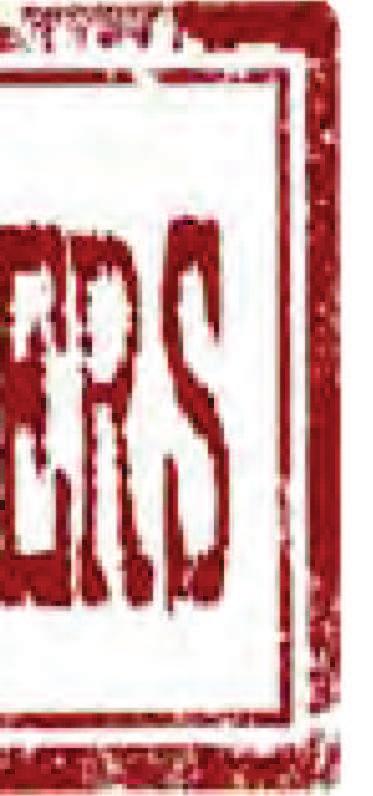





















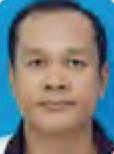
















without cracking.
This section illustrates an example of Environmental Impact Calculations (EIC) for Bridge25, based on the two different deck options shown in Figure 2. The purpose of this exercise was to
primary energy to construct the same bridge.
required for the calculation varies from country to country due to different local practices and the technologies available. Table 2 summarises the inventory data of the materials used for this
The table has been prepared for determining the equivalent Embodied Energy (EE), CO2
and the materials used. The information may be updated more frequently as the industry continues to improve its processes.

It also needs recognition that in this example, only the savings at the level of the superstructure have been considered. Further requiringasmallersubstructure,foundationsandlightermachinery and lower transport costs.
of green house gas is estimated to contribute to global warming over a given time interval. It is a relative scale that compares the gas in question to that of the same mass of CO2 year of time horizon is most commonly adopted, as per the Kyoto
introduction. To date, very little work has been done on this area
2 x 4
In this comparative study, calculation of material quantities will only cover the super structure, whereas the substructure is assumed to be the same for both cases. A comparison of the EIC results is presented in Figure 7.
27% less raw material than the conventional option. In terms of
2 emissions. In terms of the
in aggressive marine conditions. However, the most commonly accepted model of service life prediction concerning the corrosion
shows the schematic evolution of damage of RC structures due to steel corrosion. In this model, the service life is composed of two i) related to the penetration of the chlorides or carbon dioxide, i.e. the aggressive agents, until depassivation of the steel reinforcing bars and the beginning of corrosion in the bars. Second is the propagation period (tp) where corrosion proliferates. Such a model proposes that service life is to be determined as a function of an acceptable limit of corrosion.

When modelling the initial phase, corrosion is triggered chloride content is exceeded. The initial phase ends after steel models are available for the initial phase.
Once steel depassivation has occurred, reinforcement corrosion is dependent on the material quality and the environmental conditions, which must be taken into account in design and into consideration for structural safety.
The consequences of reinforcement corrosion in concrete of tensile stress in concrete due to expansion caused by corrosion boundary between reinforcement and concrete.
The effects of corrosion can be divided into those concerning the reinforcement, the surrounding concrete and the bond between the concrete and the steel.
Equation 2 is the equation that expresses the process of chloride ingress from outside with the minimum number of required input parameters, where C s is the chloride ion concentration at the exposed surface of the structure, C x is the chloride concentration at depth X after time t, D c is the chloride ion diffusion constant of the concrete material and erf is the error function (standard mathematical function).Abundant data for C s and D c based on this model have been obtained from many kinds of tests and surveys to estimate service life of existing structures. It would otherwise be nature of the data for the various parameters such as temperature, humidity, carbonation, absorption into hydrated compounds and so on. Thus, Equation 2 is appropriate for the purposes of the comparative study in this paper.

The results in Table 3 show that with a concrete cover of 50mm, and without intervention or any active corrosion prevention
maintenance, or passive or active corrosion protection systems, many conventional concrete structures in marine environments fail at an early age.
The Bridge25 project provided a unique set of challenges which technology in the design of the multiple span composite bridge for the marine environment.
In the process of design, the Engineer gained valuable exposure to the properties of the material, which imparted unique mechanical behaviour to the beams made from it. These included
reserve capacity after cracking and the ductility that was seen in the test results.
materials and careful control of the manufacturing processes.
Bridge25 has provided a live platform to compare and contrast
of strength, durability, material consumption, embodied energy, CO2 content, embodied energy and global warming potential.
in a much better position to tackle the questions of durability and sustainability
leading to sustainable solutions.
compressed to avoid cracking under service conditions.

QUESTION:
Describe your role in the design study on nuclear magnetic resonance 7400 probe tuning mechanism using ultrasonic motor. What were the objectives, problems faced and engineering solutions derived?
Life sciences technology is increasingly becoming crucial and extremely important in today’s modern world. As people become more health-conscious, a lot of research is being carried out to explore our biological world. One of
in medical radiology to visualise internal structures of our human body in detail.

does not have the word “nuclear” in MRI. The word nuclear is because it deals with the nucleus of the atom during measurements. It is a technique used to obtain physical and chemical information of a sample based on the resonant frequency of the atomic nuclei. This approach enables us to observe and measure substances and molecules in any form. They can be solid, liquid or gas and do not have to be soluble. The test sample is inserted into the center of superconducting magnet through the bore of the probe.
A computer console generates RF pulses that excite the sample’s nuclear spins away from their normal state of thermal equilibrium. The changes in energy is measured and analysed. Figure 1 shows a typical Agilent 400-MR system.
The probe in the bore of the magnet needs to be tuned to the resonant frequency of the expecting sample for effective measurement by varying the 7 variable capacitors in the
tunable capacitor’s shaft underneath the magnet through a
measurement. Therefore, a motor which does not have a magnetic core, such as an ultrasonic motor, is preferred and ideal for this application.
with the chemical formula Pb[Zrx Ti1-x]O3 (0 x
the ceramic will deform in a manner that creates a travelling wave and a drive force as shown in Figure 1. The ceramic is clamped onto the stator and the stator friction material in place will rotates the rotor to create a rotary motion as shown in Figure 2.
speeds without the need for a gear reducer and it provides
motion. Ideally, each motor is driven by its own motor driver which can be tuned to the desired driving frequency of the ceramic. The optimum driving frequency of the ceramic is

very close to the resonant frequency but never exactly at the resonant frequency itself. However, this solution is not very cost effective because there are 7 variable capacitors in a
The major problem faced in having 7 motors driven by frequency which suits all 7 motors. In this analog world, a ceramic of the same element number may have slightly determine the optimum driving frequency by sweeping the experiments, the motor is found to produce maximum torque







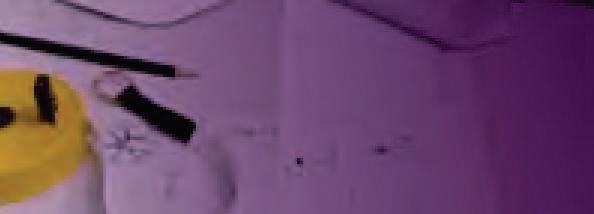






























same resonant frequencies so that they have a common value. This way, we can tune to one frequency that will suit
With this probe tuning mechanism, all motors are driven at their own optimum frequency. Assuming all 7 motors in a probe tuner have the same resonant frequency degradation rate, a probe tuner is considered to malfunction only if all 7 motors fail instead of 1. This greatly lengthens the lifespan of the product.













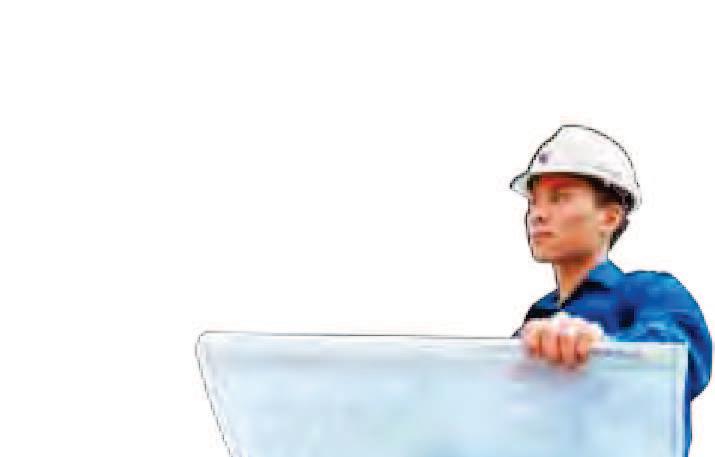





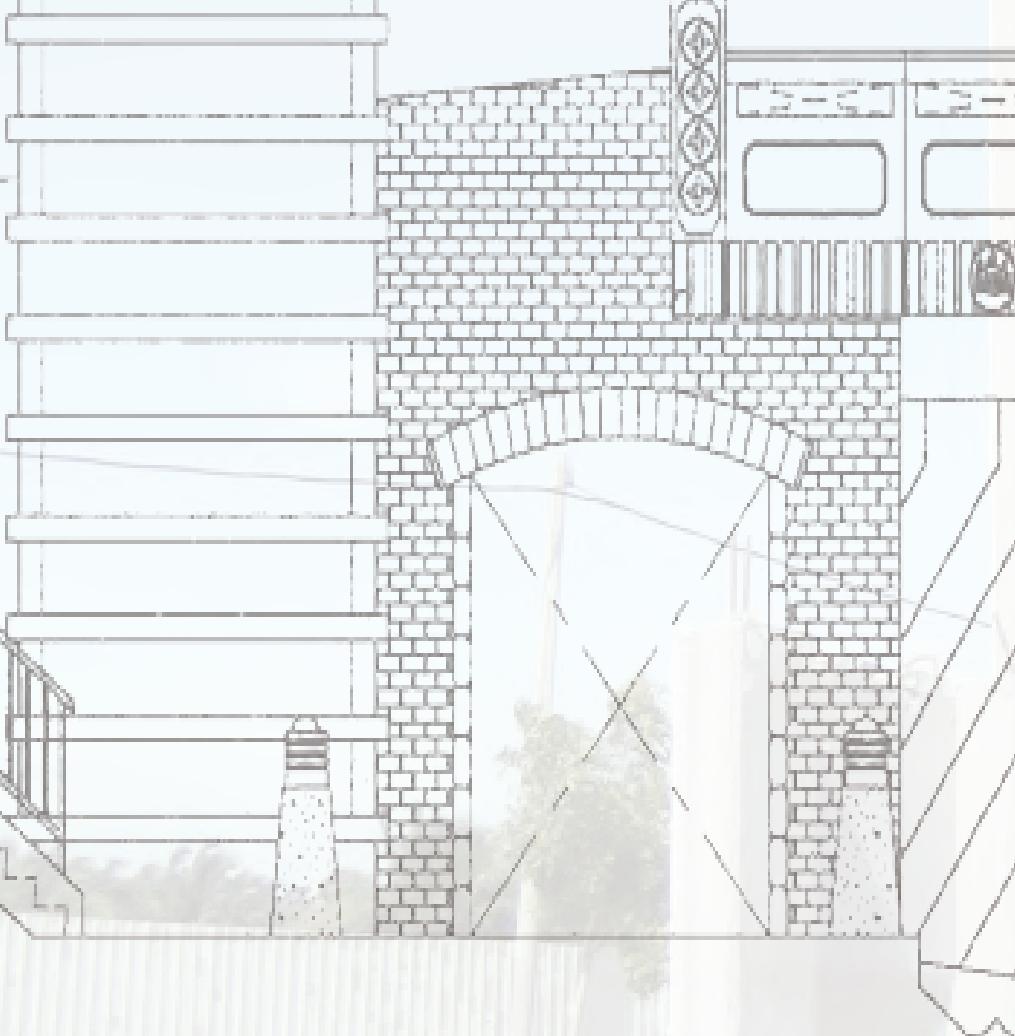






Office: Lot 5127,Batu 6,Jalan Kenangan,Off Jalan Meru,41050 Klang,Selangor Darul Ehsan. Tel:603-3392 8113 Fax:603-3392 9113 Mobile:012-306 1813,019-668 1369 E-mail:rivobina@gmail.com East Coast Office: B-2,Tingkat Satu,Lorong Sg.Isap Jaya 1,Perkampungan Sg.Isap Jaya,25150 Kuantan,Pahang Darul Makmur. Tel:09-536 3430 Fax:09-536 3431 Mobile:012-921 8110 / 013-437 4799 Email:rivopt@gmail.com

Perodua is looking into the possibility of engaging local
“Perodua does not do certain tests in our own research and
Politeknik Ungku Omar (PUO) was crowned overall champion
ceiling immediately to ensure there is no recurrence of the issues for the collapse – the support structure of the ceiling
(Sourced from NST, 13 December 2013)
(Sourced from BERNAMA, 14 December 2013)
(Sourced from BERNAMA, 13 December 2013)
(Sourced from The Star, 1 December 2013)
(Sourced from NST, 7 December 2013)





you ever encountered a crisis unfolding exactly as written in your manual? Probably never. In almost all cases, you will need to carry out hot planning. Don’t get me wrong: procedures and processes are necessary and, often, the list of contacts and quick checklists will come in handy during a crisis.
So how do we deal with these “unwritten crises”? Here are the simple steps:
1. Provide initial response to the trigger.
2. Determine if the trigger meets the criteria set by your organisation. (Refer to November 2013 article).
3. Gather the facts of the situation.
4. Conduct a situation analysis.
5.
6. Provide an update to the next level and stakeholders within an agreed interval.
7. Record decisions and actions taken.
8. Review the situation.
9. Repeat steps 3 to 8 again until you approach a crisis resolution.
10. Start the Business Continuity process. This will overlap with step 9. (Refer to May 2013 article).
These 10 steps will allow you to carry out systematic hot planning for any unforeseen circumstance.You may notice that almost all crisis management procedures are modelled after the 10 steps. In effect you can then reduce your manual to just the following:

1. Emergency Response (during on-set for various incidents)
2. Emergency Contacts and Communication
3. Media and Public Response
4. List of resources and contacts
5. Business Continuity
If you have any hot plan to share, you can reach me at pub@iem.org. my




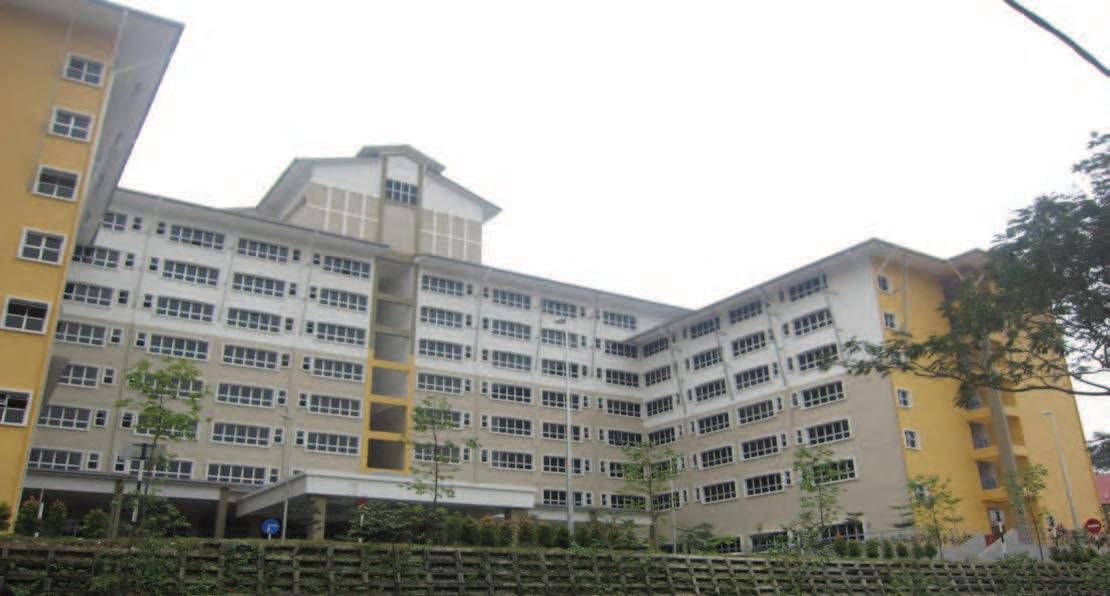
- We specialize in design and build with CIDB, Category G7.
- Creative & its collaborative partners are registered with CIDB for on-site & off-site manufacturing of precast component.
RISP programme on selected tender basis.
- We handle both IBS open system and (Simplified Precast Building System).
- Highly suitable for PR1MA projects.

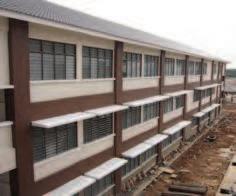














THE Water Resources Technical Division (WRTD) organised a technical visit for 11 participants to the Three Gorges Dam from 23to 27October 2013.
The visit started with a river cruise from Yichang, heading upstream towards the Three Gorges Dam. On the way, the boat passed through Gezhou Dam, which is 38km downstream of the Three Gorges Dam.
Gezhou Dam is 2,595m long and 47m high. It has 27 gated spillways which can release discharge of up to 110,000 m3/s and has a total installed hydropower capacity of 2,715 MW. There are three navigation locks and the No.2 lock is one of the largest lock gates in the world. The dam also has two outlet sluice gates for sand by-pass and this reduces the sedimentation problem upstream of the dam.
Along the journey, we also had the opportunity to observe various types of riverbank revetment works, hydraulic structures and bridges.



At our destination, a few technical employees of the Three Gorges Dam Corporation were assigned to provide us with presentations and information as well as a guided tour. Among these were Professor Wang for the overview of the dam and Engr. Wong for the hydropower generation.
We were briefed that the Three Gorges Project is the largest water conservancy project in the world. It is situated in the middle reaches of Yangtze River. The dam site is in Sandouping of Yichang City, Hubei Province, in the areas of Xiling Gorge, one of the three gorges of the river. The upstream catchment of the dam has an area of about 1 million km2 and an average annual runoff of 451 billion m3
The Three Gorges Project consists of the dam, hydropower station and navigation buildings. The river
section on both sides. The dam crest elevation is 185m, the maximum dam height is 181m, and the total dam axis is 2309.47m long.
Flood control is the primary function of the dam. It has
Yangtze River in the middle and lower reaches. With this, been raised from 10-yearARI (Average Recurrence Interval) to 100-year ARI. The total reservoir storage capacity is 39.3 billion m3 is 22.15 billion m3


The Three Gorges Hydropower Plant consists of the left bank power station, the right bank power station, the right bank underground power station and the power supply station. The left and right bank power stations are located behind the dam. The left and right bank power stations are equipped with 26 sets of 700 MW hydroelectric generating units, together with 2 sets of 50 MW hydroelectric generating units. In addition, 6 sets of 700 MW hydroelectric generating unitswereinstalledlaterintherightbankundergroundpower station. With these, the total installed capacity of the plant reaches 22,500 MW, with the yearly average generation capacity as much as 88.2 billion kilowatt hours, making it the world’s largest hydropower station. The Plant has the maximum transmission radius of 1,000 km and the power is sent mainly to the East and Central of China, Guangdong and other areas.

The dam navigational passages have a double-line construction.Annual one-way transportation capacity is 500 million tonnes. The dam has managed to improve navigation for 660km, from Yichang City to Chongqing City upstream through inundation of rapids where, the ten-thousand-ton-



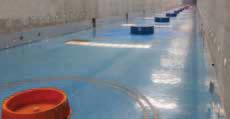

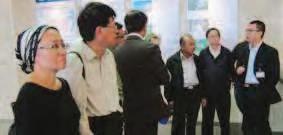


THE Oil, Gas and Mining Technical Division (OGMTD) organised a technical talk by Engr. Rudisham Marjohan on the subject of ‘Subsea Processing and The Subsea Factory Vision’ on Saturday, 24 August, 2013. A total of 63 IEM members attended the talk at Wisma IEM, Petaling Jaya.

Theobjectiveofthetalkwastoprovideanoverviewofthe subsea processing and production technologies available today as well the advances being made to realise the vision of a ‘subsea factory’ to harness hydrocarbon reservoirs. Engr. Rudisham works with One Subsea, a collaboration company between Cameron and Schlumberger. He was also a past committee member of OGMTD from 2009 to 2012 and has extensive experience spanning almost 18 years, in mining and the oil and gas industry.
The vision of a ‘subsea factory’ is essentially to bring all the conventional hydrocarbon processing and production facilities and infrastructure that we are familiar with down to the seabed, with only umbilicals to transfer the product
Its main target is to be able to produce hydrocarbons from wells located underwater without the need to connect the wells with a riser to a host facility.


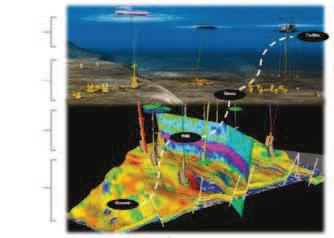
components in a subsea oil and gas development, the reason for having such infrastructure and the equipment and the tools involved in a subsea facility. In addition to the subsea development concept, he also shared with the audience some details about the typical separation and processing equipment that were already available or were being developed to suit the underwater environment such as Subsea Trees, Subsea Power System, Subsea Controls System and Subsea Processing Equipment.
He further described the technological advances in Subsea Processing Equipment which included Seabed Compression System, Seabed Pumping System and Seabed Separation System and explained the application of such systems in developments that were mostly in the North Sea area.
According to Engr. Rudisham, Norwegian oil company
2012. The company is at the forefront of development of this vision and hopes to achieve it by 2020. If the vision is achieved, all hydrocarbon extracting facilities that are now above the sea level will be brought down to the seabed, leaving an unintruded view of the empty ocean.

A technical talk on Integrating Environmental Information in Decision Making – A Petroleum Industry Practitioner’s Perspective, was organised by the Chemical Engineering TechnicalDivision(CETD),priortotheCETDannualgeneral meeting on 5 November 2013. The talk was delivered by Ms. Lee Tzee Wan, the Environmental Management Custodian (Discipline Head) of Petronas Group. The talk attracted 84 participants including both IEM and non-IEM members.
First, Ms. Lee explained the driving factors of integrating environmental information into business decision making. She said this allows a company to be labeled as a green operator. Besides, getting the Dow Jones Sustainability Index will also help to enhance the company’s reputation. In some cases, this will also allow access to funding facilities such as the World Bank. She also mentioned that it is a growing trend to address environmental conservation and
























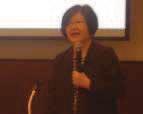


She next explained the various environmental management tools, such as Environmental Impact
incentives (e.g. water recycling, energy conservation), Environmental Management Accounting framework, and their impacts.
In the last part of the talk, Ms. Lee talked about some key challenges that a practitioner would face in his or her job such as the different scopes and requirements of different countries for the conduct of EIAstudies.As for sustainability reports, the issues to be reported and the level of details to be provided are important and have to be strategised carefully.
In conducting environmental due diligence, issues to be addressed include access to site information from the seller, and the estimation of price and liability of contaminated properties.
The talk ended with an interesting question and answer session. The chairman then presented a token of appreciation to Ms. Lee.
Note: Slides of the presentation are available on the blog of CETD – http://iemcetd.blogspot.com/




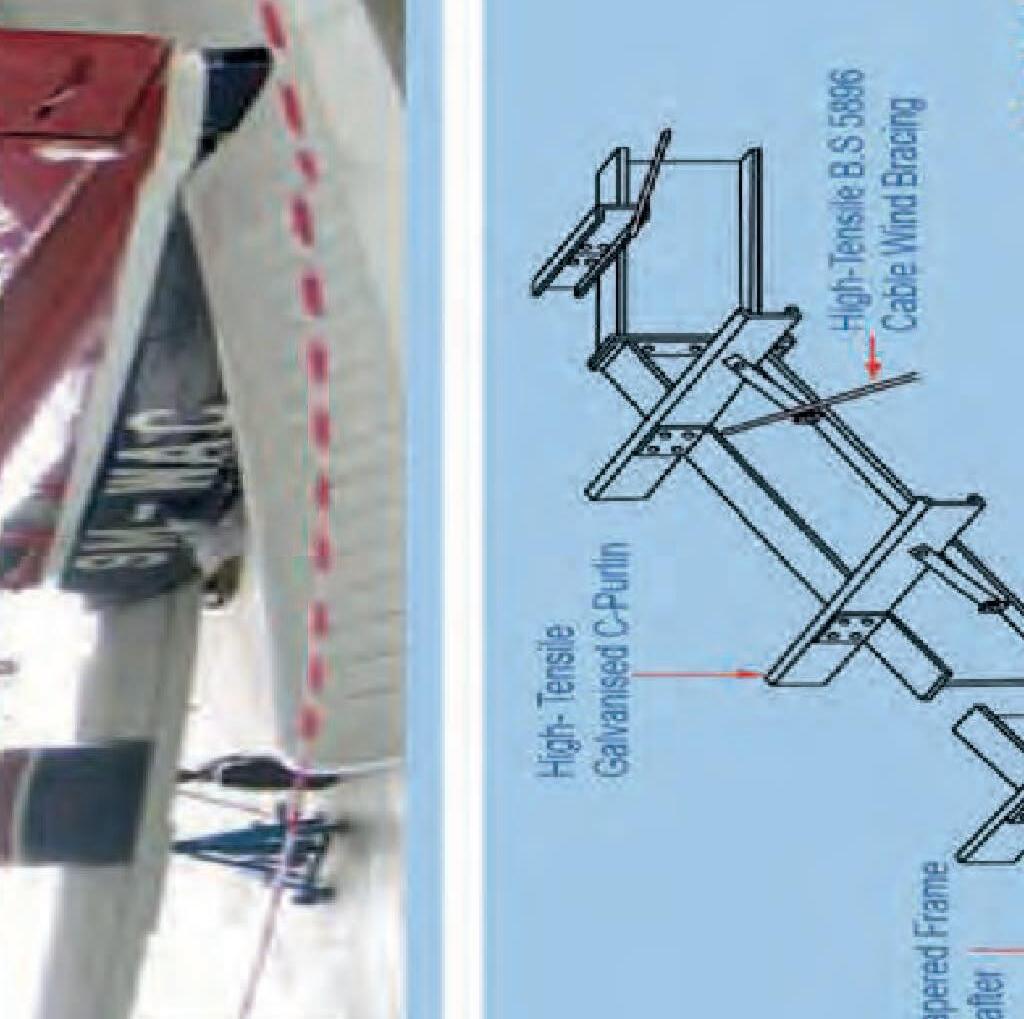
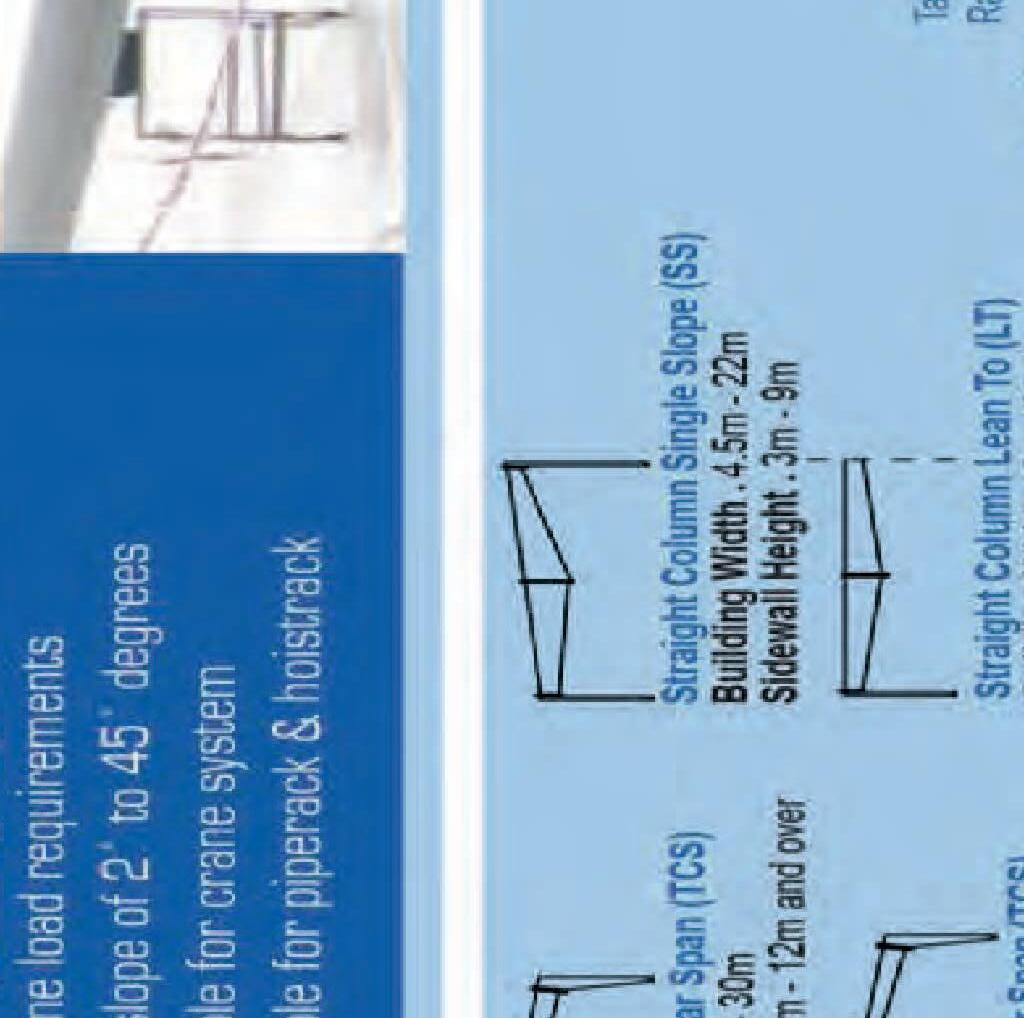









IN November 2013, I led a group of 12 Malaysians and 1 Australian to Nepal to trek up the Himalayas. We had chosen to do the 10-day ABC Trek, also known as the Annapurna Sanctuary Trek. It was my 4th trekking trip to Nepal.
Because our visit coincided with Nepal’s 2nd general elections, we had to start our trek on 18 November as the following day was polling day and all public transport was halted. On that day we travelled 7 hours in a so-called “tourist bus” from Kathmandu to Pokhara, and then for almost 2 hours more in the same bus to a village called Nayapul, 41km away. From Nayapul, we started our trek and 45 minutes later, we were in Birethanti where we put up the night.
It took us 2 days to reach Ghorepani. We covered a distance of 16km, gained 1,530m in height and climbed 3,421 stone steps up a steep mountain side. The main attraction in Ghorepani is a 3,190m high peak known as Poon Hill, an hour’s trek away.There, one is rewarded for the effort with a spectacular panorama of snow-capped peaks of both Daulagiri andAnnapurna ranges, including Daulagiri 1 (8,167m, 7th highest peak in the world), Annapurna 1 (8.091m, 10th highest) and the famous Fish Tail.
Two days later, we were in Chomrong, back on the main trail to ABC. Chomrong is 18.5km from Ghorepani but is 580m lower, at 2,170m asl. We stopped at Tadapani on the way.
Pushing on, we descended steeply into a deep valley, crossed to the other side by way of a long steel catenary bridge, climbed another mountainand continued to gain height steadily until we eventually reached a hamlet known
as Himalaya, some 13km from Chomrong. It was a long day and we actually completed the last section of our trek in a forest after dark.
Himalaya, at 2,900m asl and situated beside the mighty Modi Khola Rliver, had only two guest houses next to each other and nothing else. From there it was a steady climb to MBC (Machhapuchhre Base Camp) at 3,700m asl and 7.5km away. It had taken us 7 days to get this far from Nayapul.
Base Camp, 4,130m asl) in the morning. It was 3.5km away from MBC. The views of surrounding snowy peaks from both MBC and ABC were simply awe inspiring. We spent 2 hours inABC to enjoy the views before we started to back-track and descend. We put up in Deurali and Sinuwa on the way to Chomrong, where we followed a more direct route (about 20km) to the main road, spent the night again at Landruk before getting back to Pokhara on the 11th day.
Our 10-day ABC Trek had actually taken us more than 10 days to complete. Although we only managed to reach a maximum height that was only slightly higher than Mt. Kinabalu, the many steep climbs we had to do took their toll on me. I was beginning to feel the strain. Perhaps age was catching up on me. Nevertheless, the trek was an exhilarating experience that I will cherish for a long, long time.
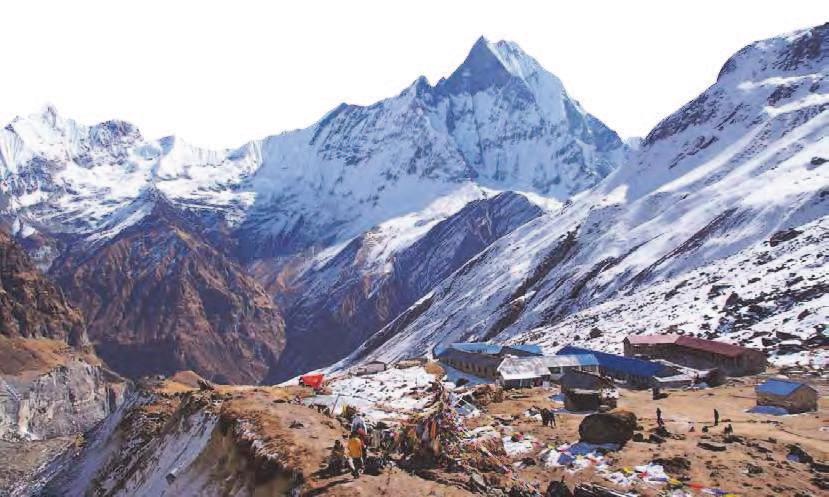
Tarikh: 12 December 2013
Kepada Semua Ahli,
Berikut adalah senarai calon yang layak untuk menduduki Temuduga Profesional bagi tahun 2014. sebulan dari tarikh penerbitan dikeluarkan.
Editorial Board, IEM
Pengumuman yang ke-69
memberikan sumbangan kepada tabung Bangunan Wisma IEM. Ahliahli IEM dan pembaca yang ingin memberikan sumbangan boleh atau menghubungi secretariat di +6037968 4001/5518 untuk maklumat lanjut. Senarai penyumbang untuk
January 2014


In a world constantly on the move, the journey towards more sustainable infrastructures is one well worth investment. At DURA, we’re exploiting the technology of ultra -high performance ductile concrete (UHPDC) to support the visionary of sustainable construction. DURA is producing high quality UHPDC precast components that has superior durability and prolonged service life, which can also help reduce embodied energy and CO2 emissions, compared to standard products.

